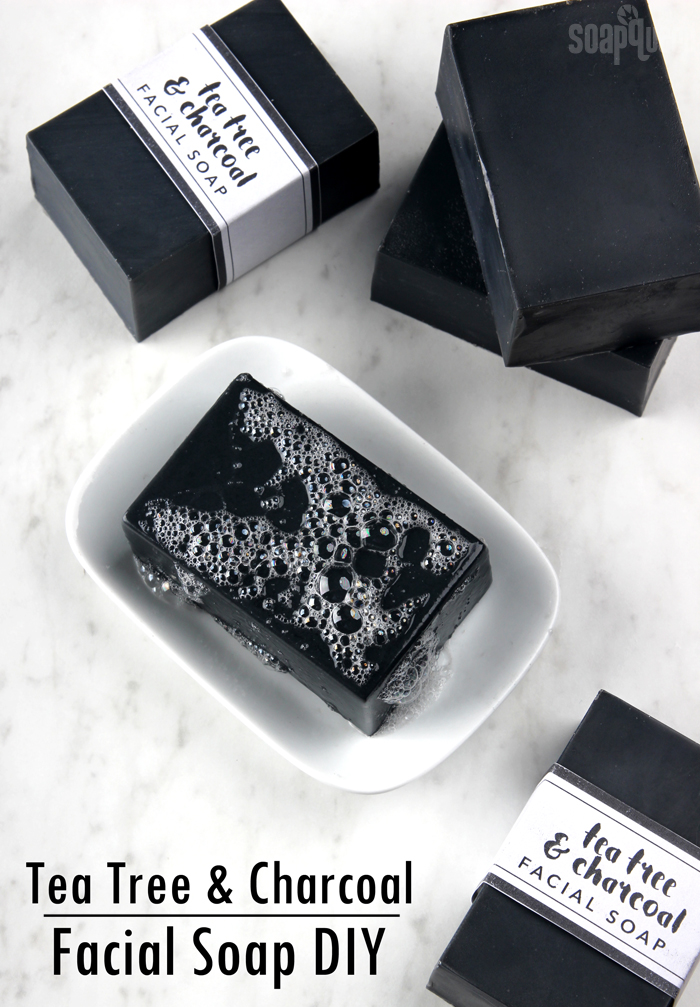
Charcoal face soap seems to be everywhere right now, along with charcoal face masks and bath bombs. It’s easy to understand why – charcoal is fantastic for the skin. It binds to dirt and oil and pulls it out of pores, leaving skin clean and refreshed. Because of its oil absorbing properties, it’s especially fantastic for oily skin.
This Tea Tree and Charcoal Facial Soap was formulated with combination to oily skin in mind. It contains activated charcoal, which gives the bars a rich black color. It does produce a slightly gray lather due to the large amount of charcoal, but does not stain washcloths. This recipe also uses tea tree essential oil, which has an earthy scent. Because this product is meant for the face, a small usage rate for the essential oil is used.
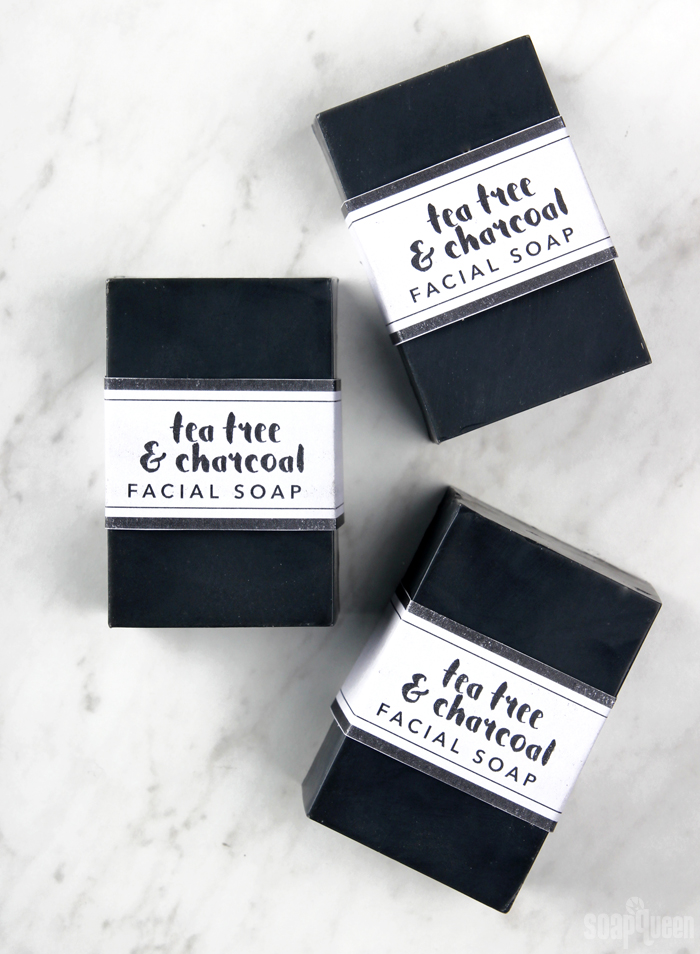
The oils in this recipe were specially chosen for facial skin. A high percentage of olive oil makes the bars gentle. Palm oil makes the bars firm, while coconut oil adds cleansing properties. Usually, I don’t use more than 2-3% castor oil in cold process soap recipes. But, in this recipe, a slightly larger amount of castor oil adds lather and cleansing properties. It also helps draw moisture to the skin to keep it hydrated. The soap is formulated with a 15% water discount to prevent stickiness and help it release from the mold faster. I also highly recommend sodium lactate for this recipe to aid in unmolding.
Last, but certainly not least, is tamanu oil. It is an incredibly unique oil with a dark color and nutty odor. If you search “tamanu oil,” you’ll find it is widely thought to benefit skin scarring, stretch marks and sores, and has anti-fungal properties. However, this recipe hasn’t been tested to prove it helps cure those ailments. We added it because it helps moisturize the skin. Learn more about tamanu oil here. Speaking of medical claims, making claims that this soap treats acne or other skin conditions qualifies classifies it as a drug by the FDA. This requires additional testing and approval. Learn more about cosmetic vs. drug claims here.
What You’ll Need:
12 Bar Rectangle Silicone Mold
1.8 oz. Castor Oil (5%)
9 oz. Coconut Oil (25%)
14.4 oz. Olive Oil (40%)
9 oz. Palm Oil (25%)
1.8 oz. Tamanu Oil (5%)
5.1 oz. Sodium Hydroxide Lye
10.1 oz. Distilled Water (15% water discount)
1.7 oz. Tea Tree Essential Oil
2 Tbsp. Activated Charcoal
Optional: 2 tsp. Sodium Lactate
Optional: Charcoal Soap & Scrub Label Template -Free PDF

Click here to add everything you need for this project to your Bramble Berry shopping cart!
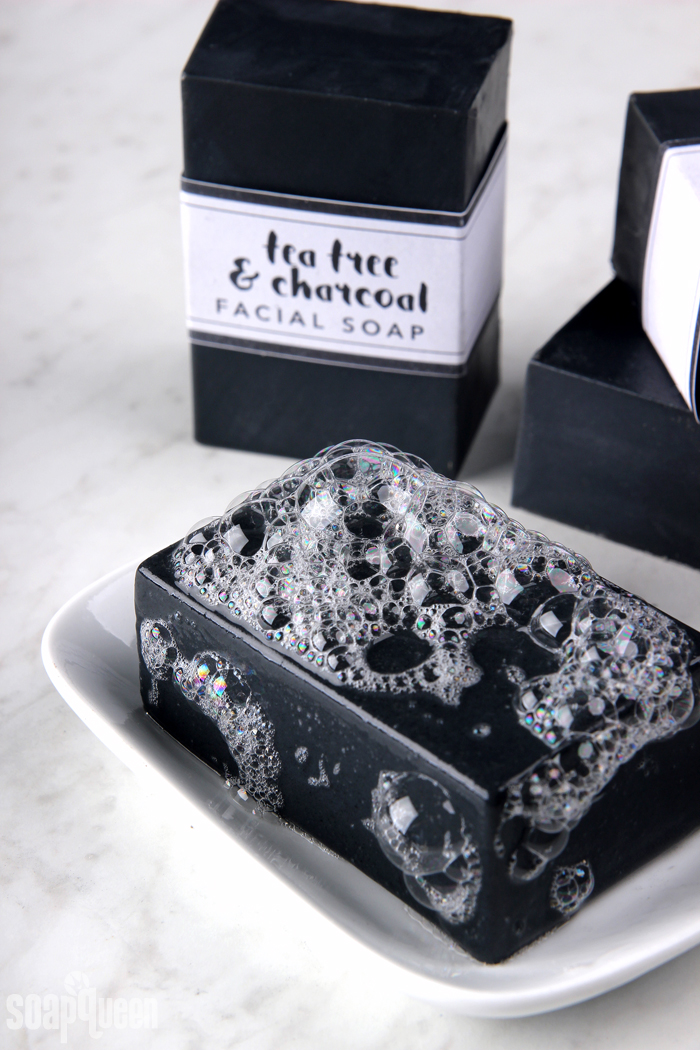
- 12 Bar Rectangle Silicone Mold
- 1.8 oz. Castor Oil (5%)
- 9 oz. Coconut Oil (25%)
- 14.4 oz. Olive Oil (40%)
- 9 oz. Palm Oil (25%)
- 1.8 oz. Tamanu Oil (5%)
- 5.1 oz. Sodium Hydroxide Lye
- 10.1 oz. Distilled Water (15% water discount)
- 1.7 oz. Tea Tree Essential Oil
- 2 Tbsp. Activated Charcoal
- Optional: 2 tsp. Sodium Lactate
- Optional: Charcoal Soap & Scrub Label Template -Free PDF
- Slowly and carefully add the lye to the water and gently stir until the lye has fully dissolved and the liquid is clear. Set aside to cool.
- Fully melt the castor oil, coconut oil, olive oil, palm oil and tamanu oil (remember to fully melt then mix your entire container of palm oil before portioning).Once the lye water and the oils have cooled to 130 degrees or below (and are ideally within 10 degrees of each other), add the lye water to the oils and stick blend until thin trace. If you’d like a harder bar of soap that releases faster from the mold, you can add sodium lactate to the cooled lye water. Use 1 teaspoon of sodium lactate per pound of oils in the recipe. For this recipe, you’d add 2 teaspoons sodium lactate. Stick blend the soap until it’s at a thin trace.
- Add 2 Tbsp. activated charcoal to the soap. Use your stick blender to "tap down" the charcoal to start to mix it into the batter. If you turn on the stick blender immediately, the charcoal may "poof" into the air. Slowly pulse the stick blender to incorporate the charcoal.
- Add the tea tree essential oil to the soap, and use the stick blender to blend and stir the essential oil until completely mixed in.
- Continue to stick blend for just a few seconds, to make sure the ingredients are completely combined. When the soap is a medium trace and is still pourable, pour the batter into the individual cavities of the 12 Bar Rectangle Mold. Tap the mold on the counter to even the soap and get rid of bubbles.
- Spritz the top of the soap with 99% isopropyl alcohol to prevent soda ash. Place on a heating pad set to medium heat, and insulate the soap for about 30 minutes. Turn off the heating pad, and leave the soap insulated for 24 hours.
- Allow the soap to stay in the mold for at least 3-4 days. Because this soap has plenty of soft oils, it may need up to a week in the mold. Don't rush it! Once the soap is firm enough, unmold and allow them to cure for 4-6 weeks. Enjoy!
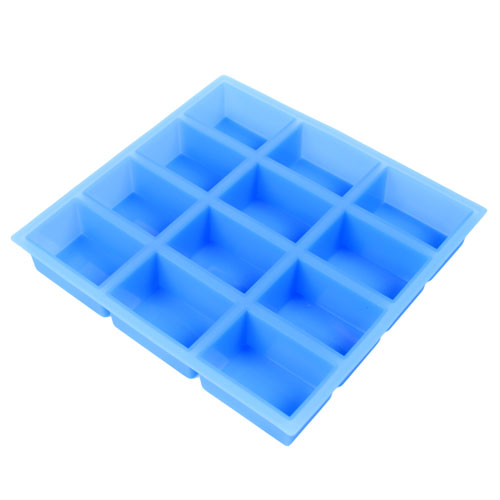

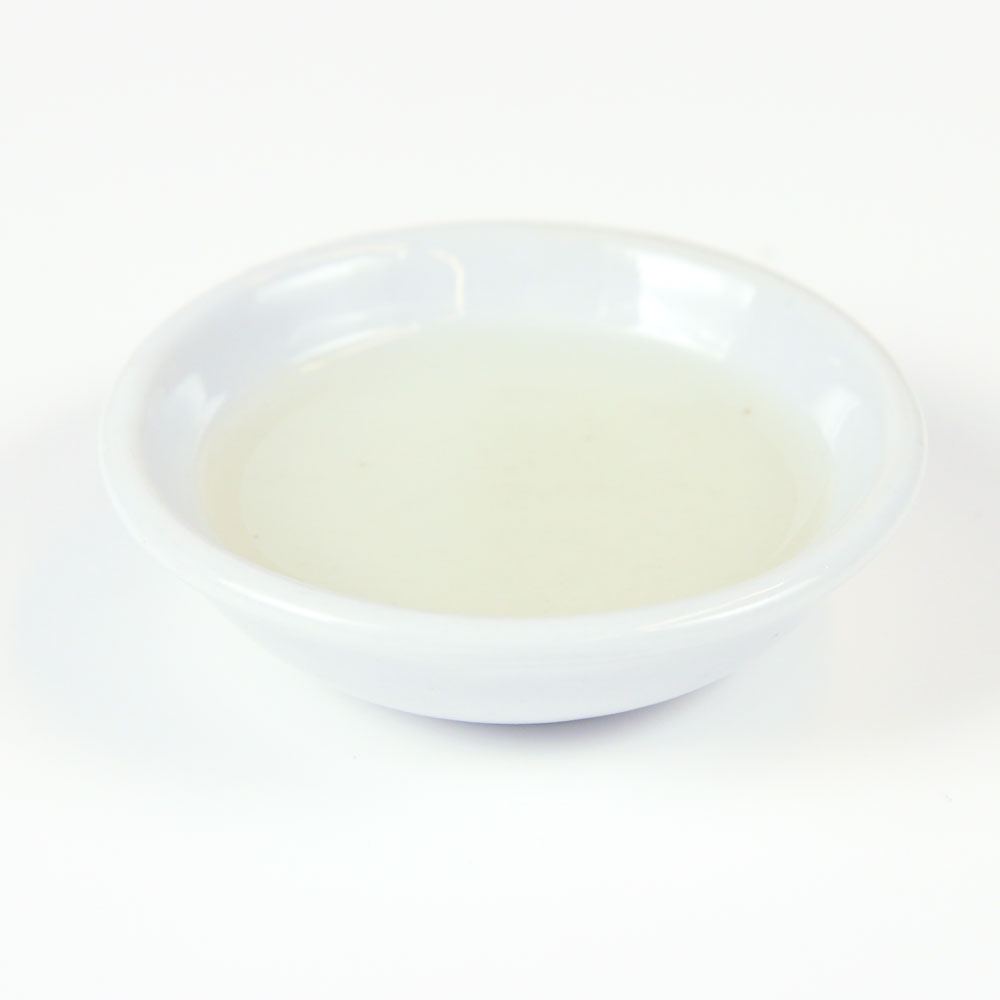
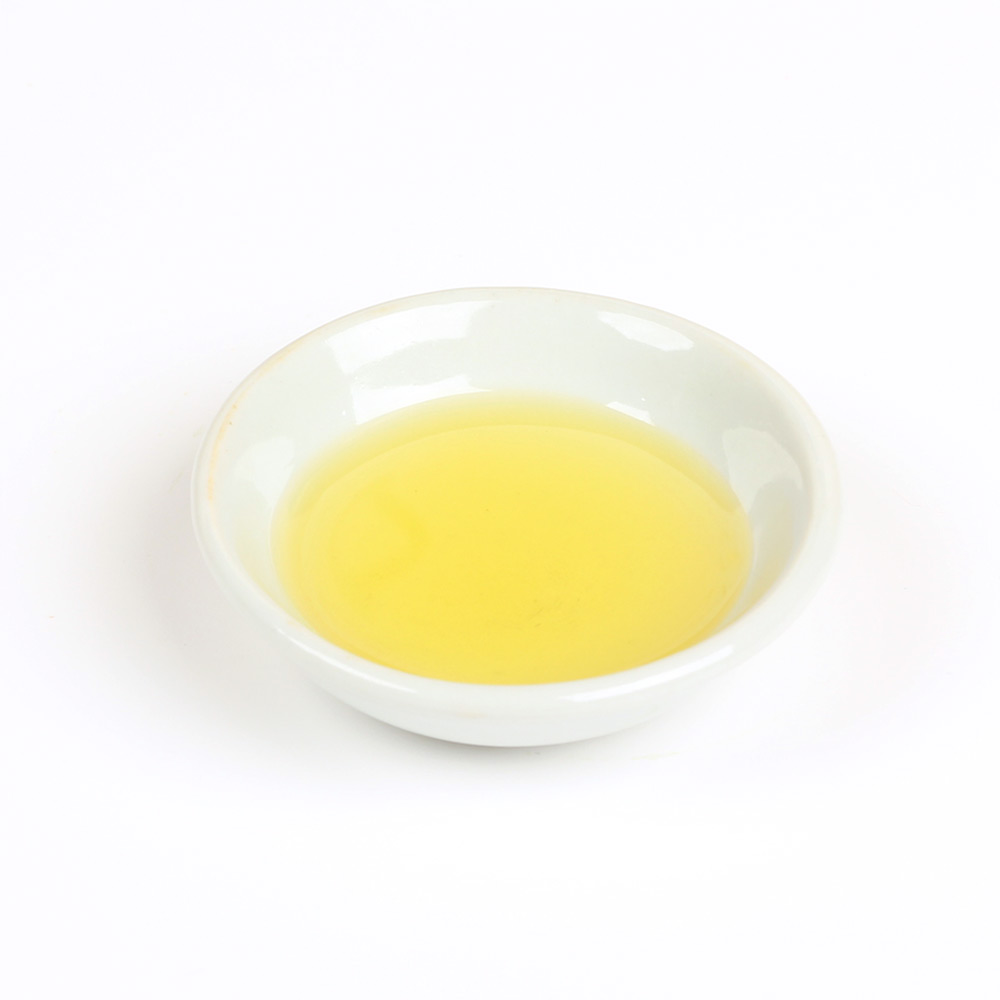
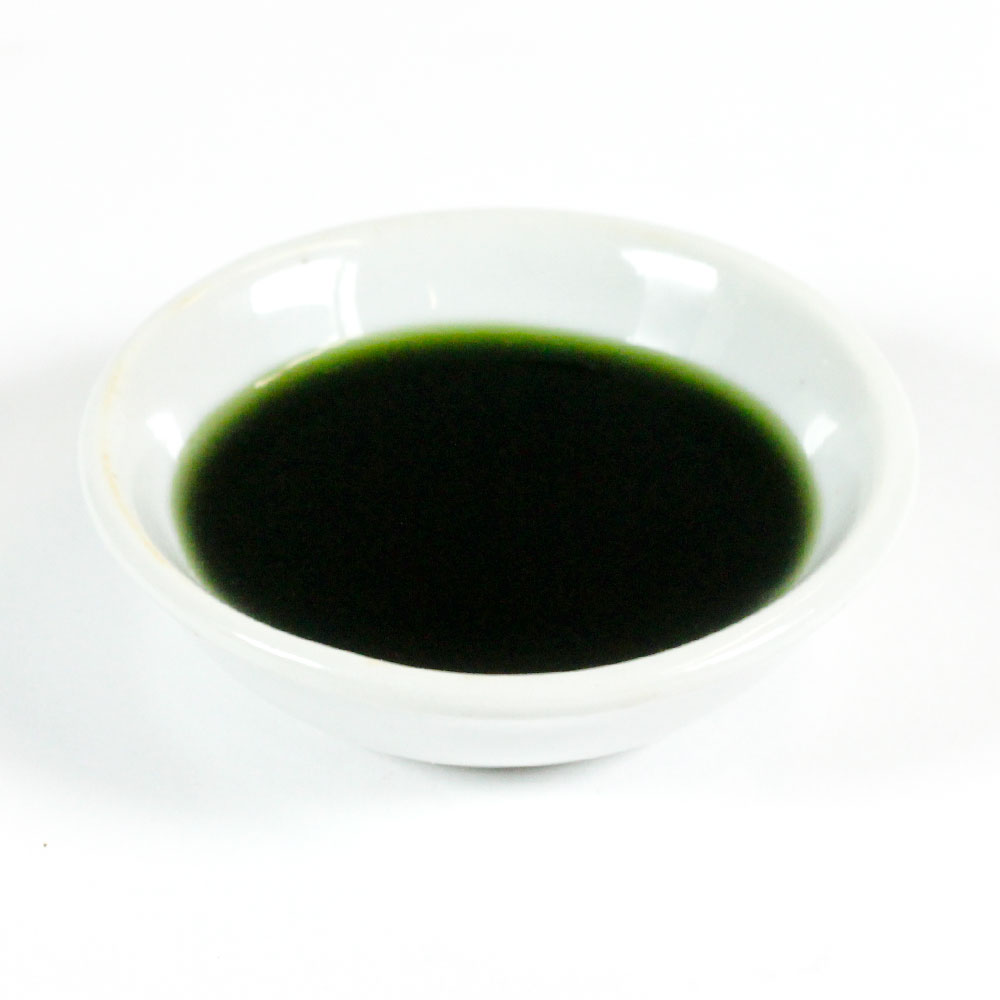
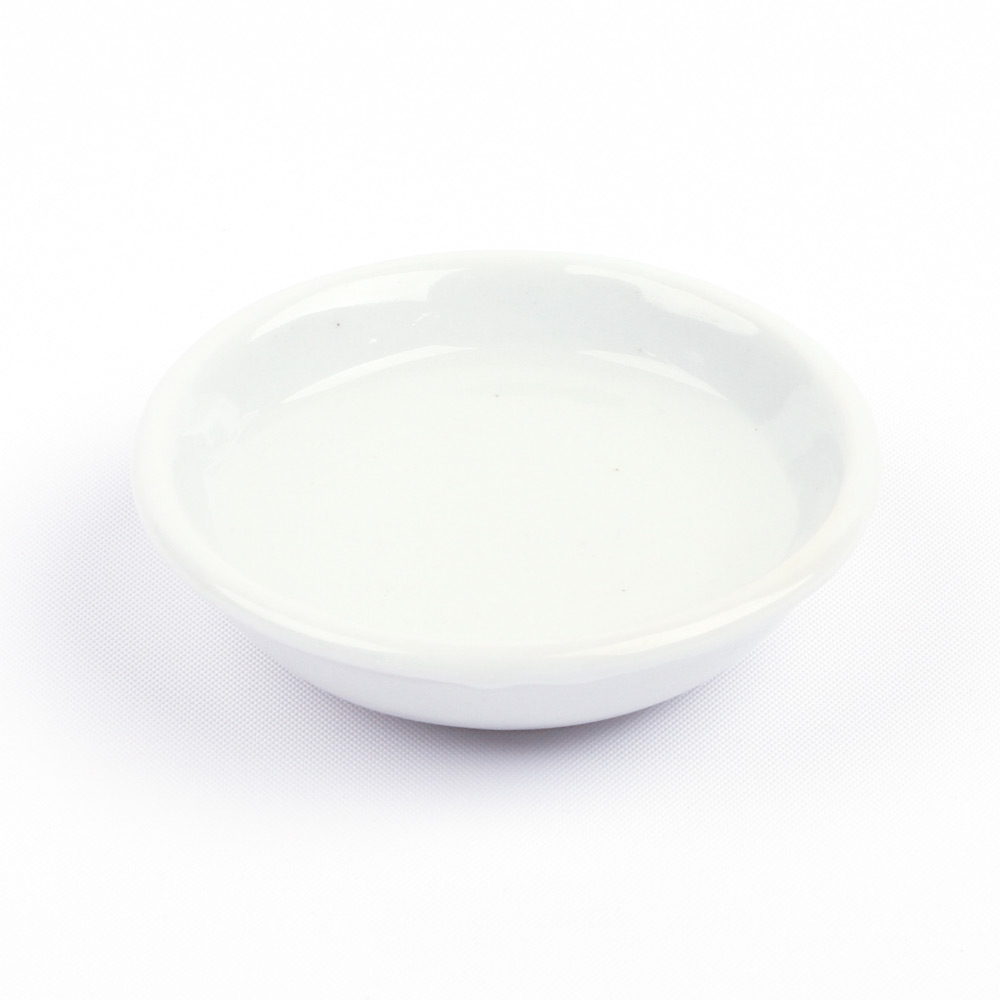

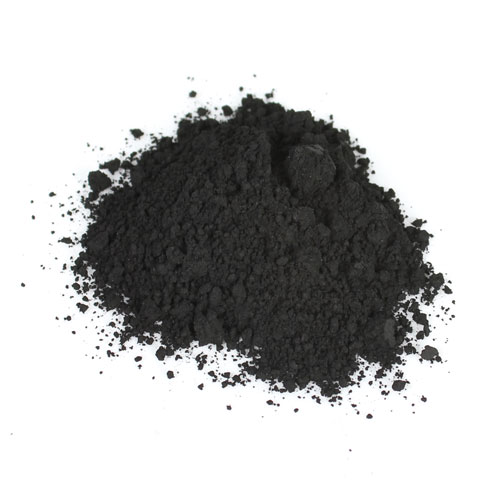
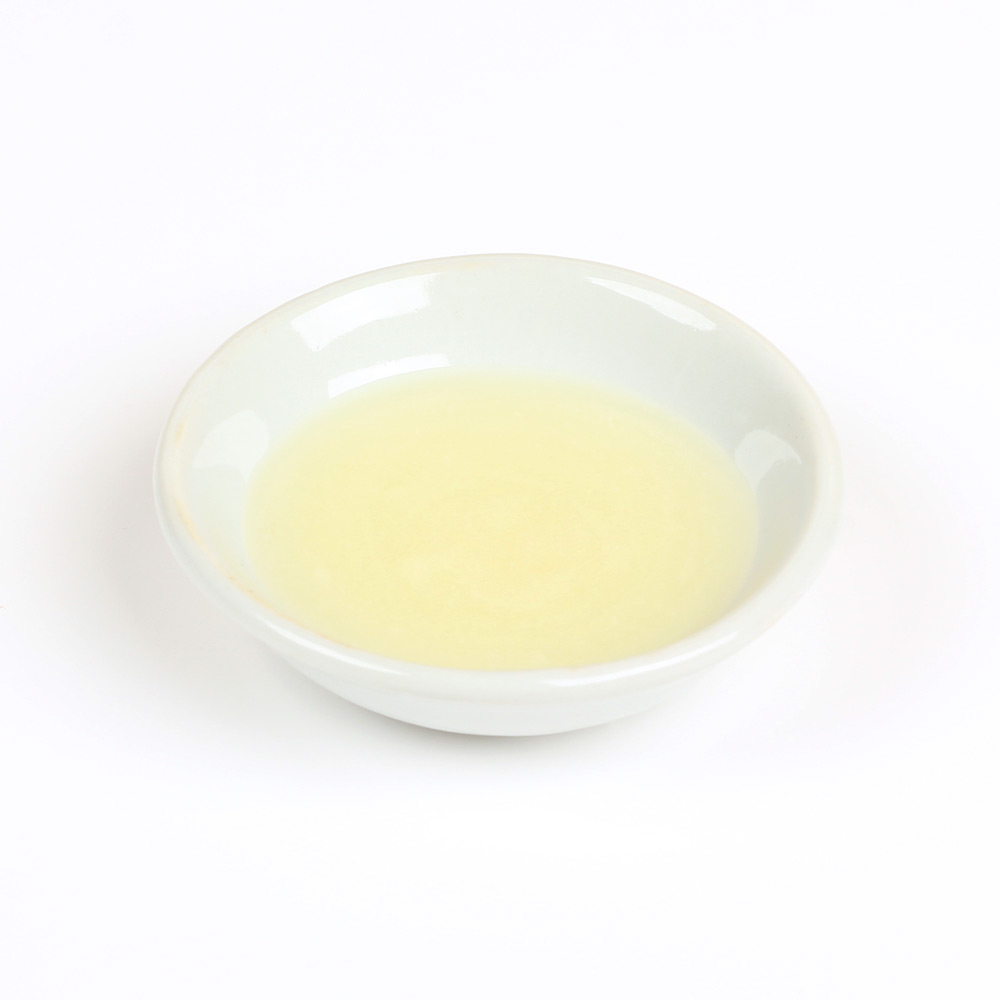
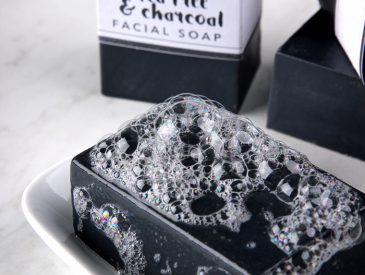
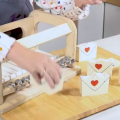
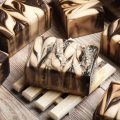
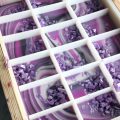
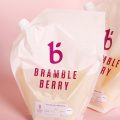
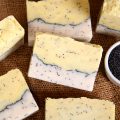
Hi ! i am so glad that i encountered your space !!!! I would like to ask you about the calculation of ratio of oil and essential oils in the soap. I have a bad acne and oily face condition which i couldn’t use any artisan soap but this recipe below is my life saver, which it is somehow similar to what you are showing. How should i divide the ratio allocated for these ingredients? Because the one making my soap is no longer here….
Hope you can help me and give me some guidance about the ratio with your experience, thank you 🙂
Peppermint essential oil
Menthol
Activated charcoal
palm oil
castor oil
olive oil
coconut oil
If you’re wanting to create your own recipe from those ingredients this post on Formulating Cold Process Soap recipes should help:
https://www.soapqueen.com/bath-and-body-tutorials/tips-and-tricks/formulating-cold-process-recipes/
I was wondering if it would be possible to do this recipe with your Swirl Mix in place of the oils listed. I still would love to add tamanu oil, but I’m having a hard time trying to figure out if that would make for a good face soap. Your help would be amazing!
We used Tamanu in this face recipe and loved how it feels! I just made something similar to this recipe with the Lots of Lather quick mix and it seems to be wonderful so far so I would say go for it!
Hi What is the superfat of the Tea tree and charcoal face bar?
This recipe is a 5% superfat!
1.7oz is a lot of essential oil, isn’t the fragrance too overwhelming?
Since the recipe makes 3 pounds of soap the 1.7 ounces equals roughly a 3.5% usage rate. The max we normally recommend is 5% for most fragrances and essential oils so the oil will not be as overpowering because of this.
I tried this recipe and I added all oils correctly and did use any substitutions; soap came out a beautiful rich black color. I checked on it the next morning still looked no soda ash nothing wrong with the soap. I went to cut it and unmold and realized it turned gray. I was mortified. I don’t understand what happened. Can you help
If your soap doesn’t go through gel phase, it will turn out more grey in the middle. It’s not harmful in the slightest, it’s only an aesthetic issue. Be sure to follow the directions from Step 6 and you shouldn’t encounter that problem again.
Hello. I know you instruct to pour to individual molds but I would like to use a loaf mold instead. Will the loaf still be soft enough to cut with a wire cutter after 4-6 days in the mold?
Thanks!
This recipe would be just fine to use in a loaf mold. It should still be soft enough after 4-6 days in the mold, especially if the mold is silicone.
I don’t have any neem or pumpkin seed oil. What else can i substitute the tamanu oil with?
Hi there! I made this recipe but got distracted during soap making and left out the castor oil. This will make my soap lye heavy….and the soap is in the molds right now. Do I give them a few days and then shred them up to make that oil up in hot process in order to rebatch? I want to save them if possible, but realize they won’t be the nice, smooth, hard bars that I was hoping for. It’s a very expensive combo of ingredients to waste….
Hi..Thank you for this recipe I have a question.the charcoal soap which i make after a month take a little of moisture on their surface.. I wanted to know what the reason for this moisture..
If you live in a humid environment that can happen. We recommend storing all your soaps in a cool and dry place.
Love this article! I like to read your blogs. I am going to try this charcoal facial soap. Thanks and keep sharing.
I made this first time and it came out perfect! The second :/ not so much. I want to learn from my mistake but have no idea what i it was? I CP and temp was within 10 and at around 110. It seem to seize ? I am not sure if I added sodium lactate to first batch ..don’t think I did but this second batch I know I added to cool lye water. Seemed to seize within a minute of mixing. There was no eo or fragrance added yet. Can you help suggest what maybe I did wrong ?
It sounds like you have a few things happening. First, sodium lactate is used to harden your soap and get it out of the mold faster – it can also contribute to a faster trace. If you find that to be the culprit, then you can omit it with your next batch; sodium lactate is entirely optional. We’d also recommend combining your oils at around 120-130F, this should give you more time to play with your mixture before it begins to set up. If you need anything further, please contact us at [email protected].
Hi! If I don’t have a heating pad, would you suggest that I put this in the oven? And if so, can I put my Bramble Berry 10” silicone loaf mold or my tall 12” silicone mold in the oven?
Thanks!
Those molds are technically rated to do this, but it can cause pock marks inside of the mold because of the higher temperatures. If you do this make sure you put the oven on the lowest setting, leave it on for an hour and then leave the soap overnight in the cooling oven. This process is called CPOP and you can find more information on it here: https://www.soapqueen.com/bath-and-body-tutorials/cold-process-soap/hot-process-series-cpop-swirls/
Thanks! If I do put it in the oven, will it still be soft enough to cut easily after a day or two in mold?
Also (sorry for all the questions!) is there a specific reason that this soap requires this specific treatment (i.e. heating pad) rather than the usual insulation with cardboard and towel?
A good portion of the moisture will be baked out up front, but your soap should be ready to unmold and cut right away. We like to use the heating pad to get the internal temperature of the soap up to a point where gel phase occurs. Gel phase, especially with charcoal soaps, will give the bars a deeper shade of color. Forcing gel phase is optional though. Here’s a link to our ‘Jazzed About Gel Phase’ blog post for more information: https://www.soapqueen.com/bath-and-body-tutorials/tips-and-tricks/gel-phase/
I have successfully made yogurt in my oven by leaving the oven light on and the oven door closed, with the heat off. This heats my oven to around the low 90s. This might work for the silicone molds. I haven’t tried it, because I have a heating pad, but it seems like that might be warm enough to encourage gel, but not damage the silicone.
Hi, thank you SO much for including percentages! I had been looking at countless recipes with g, oz, ml, cups etc, and spending a lot of time cross referencing to figure out percentages, which is the only sensible measurement because it’s more versatile than any other unit! Thank you!
Absolutely, you’re welcome!
Is there any way that I could take out the tamanu oil and/or palm oil?
You can take out the tamanu and add 0.8 oz. of olive oil to make up for that difference. Make sure to run the recipe through the Lye Calculator after any substitutions: https://www.brambleberry.com/Pages/Lye-Calculator.aspx
You can replace the palm oil with babassu oil. You can use the same amount as the palm oil.
Babassu oil: https://www.brambleberry.com/Babassu-Oil–P6807.aspx
You can add certain oils and butters to add the firmness palm oil does. For instance, adding a hard butter, like cocoa butter up to 15%, can harden the bars. You can also add coconut oil or tallow up to 33%.
Read more about common oils and what properties they add to soap here: http://www.soapqueen.com/bath-and-body-tutorials/tips-and-tricks/free-beginners-guide-to-soapmaking-common-soapmaking-oils/
This post on substituting oils has some great information too: http://www.soapqueen.com/bath-and-body-tutorials/tips-and-tricks/how-to-substitute-oil-in-cold-process-recipes/
Hello! how can i replace apple vinegar instead of water?. wath do i have to change in recipe?, can i ad some sea salt to it? can you help me with this information needs?
We don’t recommend vinegar because it can react with the lye. Distilled water works best for this recipe.
As for the salt, you can add that to the soap. Do you want to add salt to exfoliate the skin, or dissolved salt to harden the bars? Let me know and I can offer tips.
I only have 1oz tamanu oil,instead of 1.8. I have palm, coconut, and olive oil. Can I use one of these oils to make up the missing .8oz?
Yes, you can add 0.8 oz. of olive oil to make up for that difference. Make sure to run the recipe through the Lye Calculator after any substitutions: https://www.brambleberry.com/Pages/Lye-Calculator.aspx
Thank you for this recipe. What’s an alternative for Tamanu oil?
Tamanu oil has a unique texture, similar to neem or pumpkin seed oil. Those would be good substitutes for it. You may want to make a small test batch to see what you think.
Neem oil: https://www.brambleberry.com/Neem-Oil-P6806.aspx
Pumpkin seed oil: https://www.brambleberry.com/Pumpkin-Seed-Oil-P5894.aspx
Remember to run your recipe through the Lye Calculator after any substitutions: https://www.brambleberry.com/Pages/Lye-Calculator.aspx
This post on substituting oils in cold process soap has some great tips as well: http://www.soapqueen.com/bath-and-body-tutorials/tips-and-tricks/how-to-substitute-oil-in-cold-process-recipes/
Hi! can I add Rose Hip EO in the recipe?
Yes, you can use that essential oil in this recipe. Find out how much to add with our Fragrance Calculator: http://www.brambleberry.com/Pages/Fragrance-Calculator.aspx
I made this recipe once in a loaf mold and it turned out great. I just made it again using the 12 cavity mold and it turned out light gray and covered in soda ash.
I sprayed it with the alcohol and insulated it. My oils and lye were around 130 when mixed. It also got thick really quickly both times, which wasn’t a huge problem with the loaf mold but made it hard to get into the cavity mold.
Is there anything else I can do to make sure it stays black in the cavity mold and doesn’t get soda ash? Thanks!
In the 12 cavity mold the soap does cool a lot quicker, which can cause soda ash even with alcohol, water discount, and higher temperatures.
You can steam or wash that ash off though. It will also help the color look more vibrant. Learn how here: http://www.soapqueen.com/bath-and-body-tutorials/tips-and-tricks/explaining-and-preventing-soda-ash/
Thanks! I will give this a try.
i saw so many soaps this is so beautiful, you are blessed. thanx
Thank you!
Hi! I’m a total newbie in soap making. Still on research phase and I’m planning to do this as my first ever batch. 🙂 I just have a question. Is using a Virgin Coconut Oil and Extra Virgin Olive Oil okay with your recipe? Coz I noticed what was listed was just Coconut Oil and Olive Oil, so I’m not sure if it will make any difference or if I will have to adjust the recipe?
Those oils should be fine to use in this recipe. Make sure they don’t have any additives, and if you’re getting them from a grocery store we recommend a larger one like Costco. The oil is rotated through more quickly so there’s less chance of it going rancid.
Learn more in this post: https://www.soapqueen.com/bath-and-body-tutorials/tips-and-tricks/olive-oils-created-equally/
Hello,
Would it be okay to substitute lavender oil for the tea tree oil? I want to make a soap more geared for an oily complexion as opposed to your other lavender charcoal soap recipe.
Thanks in advance!
Yes, you can use lavender essential oil in this recipe. Find out how much to add with our Fragrance Calculator: https://www.brambleberry.com/Pages/Fragrance-Calculator.aspx
That will make the soap smell different but it will still be cleansing. If you want a more moisturizing bar, I would recommend reducing the charcoal and hard oils (palm/coconut) and increasing the soft oils like olive oil.
Learn more about formulating recipes here: http://www.soapqueen.com/bath-and-body-tutorials/tips-and-tricks/formulating-cold-process-recipes/
I can’t figure out how to leave a comment without adding to another persons. Sorry bout that 🙂
My soap turned out grey instead of black. Can you tell me why?
Did you make any substitutions to the recipe? What oils you add will affect the color. Also, how did you store the soap after it was in the mold?
The good news that even if the color is lighter the soap will still feel great on the skin.
Could parts of this recipe be substituted with tallow? I would also like to add pumice and use this as a mechanics soap
Yes, you can use tallow in this recipe. You can substitute some or all of the palm oil with tallow.
Remember to run the recipe through the Lye Calculator after any substitutions: https://www.brambleberry.com/Pages/Lye-Calculator.aspx
Learn more about substituting oil in this post: http://www.soapqueen.com/bath-and-body-tutorials/tips-and-tricks/how-to-substitute-oil-in-cold-process-recipes/
For the pumice, start with about 1 teaspoon per pound at trace. You can add more from there if you like.
Pumice: https://www.brambleberry.com/Pumice-P4067.aspx
Hi! I am new to soap making. I love this recipe but was wondering how I would modify it to dissolve the wax and oil better from makeup?
Would a higher superfat % work better to dissolve wax and oil based makeup or so I need more oil to lye ratio? Perhaps there’s an oil substitute that I can make in this recipe to achieve that?
Thanks!
Oil really helps break down makeup, so you may try increasing the superfat to see if those freefloating oils help. Right now it’s at 5%, so you can try 6-8% to see what you think.
This post has more on superfatting: http://www.soapqueen.com/bath-and-body-tutorials/cold-process-soap/superfatting-soap-an-explanation-2/
You may also try a two-step process. Using a cleansing oil to break down the makeup and then going in with this bar as is will get your skin nice and clean.
These cleansing oils are a good option: https://www.soapqueen.com/bath-and-body-tutorials/oat-oil-cleansers-for-dry-oily-skin/
Can I make this Hot Process and make liquid soap from this recipe?
Once this recipe is made with sodium hydroxide lye, it will remain a solid soap. If you want liquid soap, you’ll need to use potassium hydroxide lye. This kit comes with ingredients and instructions for making liquid soap from scratch: https://www.brambleberry.com/Liquid-Soap-Guru-Kit-P4829.aspx
We also sell premade liquid bases: https://www.brambleberry.com/Liquid-Bases-C15.aspx
They’re easy to use, learn how in this post: https://www.soapqueen.com/bath-and-body-tutorials/tips-and-tricks/how-to-use-and-thicken-liquid-soap-base/
Hi,
I register my ingredients for my cp soap with Health Canada. We are only allowed
0.1 to 0.3% of Activated Charcoal in our soap recipes. Does the US not have rules for this product also? This recipe sounds wonderful but the activated charcoal is at 1.9%.
We are allowed to use that amount of charcoal. You should still get some of the benefits at that lower usage rate, but you won’t get a lot of color.
Victoria, where did you find this information regarding the Activated Charcoal here in Canada? I have been looking but cannot locate. Even asking in FB groups. Thanks.
I tried putting this into the forms for the canadian gov site but it didnt say restrictions did they only tell you that after you submitted the form? Just wondering so I know when making this
I am About to make this facial bar but i have substituted 20% of the Olive oil and Palm oil with neem oil, leaving 25% Olive oil and 20% Palm oil; will let you know how it turns out.
Sounds good, enjoy Bella.
Hello,
I have made the charcoal facial soap before and it came out perfect, but yesterday I made it and it has a greenish blue color to it. If you could help me I would really appreciate it.
Thanks,
Lisa
Did you make any substitutions for the second batch? Also, did you notice your olive oil was more yellow? The color varies from batch to batch and can affect the shade of the final soap.
I didn’t substitute any oils but the color of my oils did seem a little more yellow this time. Thank you so much for you help. Take care.
That is likely the cause then. The good news is it will still feel great on the skin.
My first attempt at this (slightly modified) recipe didn’t work so well. The soap got rock hard before I could pour. I think it’s because I added my distilled water to a measuring cup and then added the lye chunks until it increased by 5.1oz, which is probably a lot more lye than the recipe calls for. Whoops!
Also I’m trying to substitute the tea tree oil for a mixture of clove bud, lavender, and lemongrass oils. Any tips on the portions? 🙂
Thanks!
It does sound like there may be too much lye. There are several ways to check for that, find out how here: https://www.soapqueen.com/bath-and-body-tutorials/tips-and-tricks/troubleshooting-lye-heavy-soap/
If it is lye heavy, you can use it as laundry soap.
For your next batch, we recommend weighing out all your ingredients using a scale. We find that’s the most accurate for soapmaking.
As far as blending essential oils, there is a method for doing that safely. Find it here: https://www.soapqueen.com/bath-and-body-tutorials/tips-and-tricks/how-to-blend-essential-oils-safely/
I love this recipe! This soap was my standard christmas gift to all my family and friends and I have gotten lots of great feedback about it clearing up skin! I actually notice that this soap prevents my skin from getting so dry as it typically does in the winter. I substituted Jojoba oil for the Tamanu oil and it turned out great! I made it for the second time today.
Thank you for a great recipe!
You’re welcome, glad to hear you’re enjoying this recipe Joelle. 🙂
I have everything ready to make this soap but the more I am reading I am thinking I might not be able to use it myself. I have normal to dry skin but love the idea of this soap. Did you try using the Tamanu oil first and found it too drying and decided to substitute the Jojoba for Tamanu? Thanks!
The liquid oils in this recipe help add moisturizing properties. If you want to adjust this soap for dry skin, you can try add less charcoal. You can also reduce the coconut and palm by 5% each and add 10% more olive oil to replace it. It will be softer and more moisturizing overall.
Remember to run the recipe through the Lye Calculator after any substitutions: https://www.brambleberry.com/Pages/Lye-Calculator.aspx
This post on formulating cold process recipes has some good information as well: http://www.soapqueen.com/bath-and-body-tutorials/tips-and-tricks/how-to-substitute-oil-in-cold-process-recipes/
I was wondering, would it be possible to use a different essential oil in place of the tea tree oil?
Absolutely, you can use any skin-safe essential oil you like. Find our selection here: https://www.brambleberry.com/Essential-Oils-C157.aspx
You can use the Fragrance Calculator to find out how much to add this recipe: http://www.brambleberry.com/Pages/Fragrance-Calculator.aspx
Hello,
I’m a soap making newbie 🙂 and would like to try this recipe.
What kind of heat pad is used? Is it necessary to use one? What are alternatives to the heat pad? Thanks!
You can use any kind of heating pad you like, we found ours on Amazon. It is optional for this recipe.
The heating pad is helping to force gel phase. During gel phase the soap gets really hot, which helps make the colors more vibrant: http://www.soapqueen.com/bath-and-body-tutorials/tips-and-tricks/gel-phase/
In place of the heating pad, you can put a piece of cardboard on the mold and then cover it with a towel or blanket. That keeps it pretty warm. If you find it’s still not gelling, give the heating pad a try.
This post has more on insulating soap: http://www.soapqueen.com/bath-and-body-tutorials/tips-and-tricks/when-to-insulate-handmade-soap/
What superfat is this recipe?
This recipe has a 5% superfat. We find that adds luxury without making the bars too soft.
could I use palm kernel oil instead of palm oil?
You can, but you will need to adjust the recipe. We recommend the palm kernel flakes at 15%, so you can add more olive oil to make up for that difference. You can also add 5% more coconut oil for a harder bar.
Remember to run your recipe through the Lye Calculator after any substitutions: https://www.brambleberry.com/Pages/Lye-Calculator.aspx
Palm kernel flakes do accelerate trace, so be prepared to work more quickly. You may also want to make a small test batch to see what you think of the changes.
Palm kernel flakes: https://www.brambleberry.com/Palm-Kernel-Flakes-P3446.aspx
thanks! I just ordered the palm oil.. I figured I should start with the recipe as it is.
I think that’s a good idea. Once you try it on your skin you can make adjustments for the next batch if you like.
Excellent article! Thank you for sharing. A quick question, would it still work out ok if I decided to just use one type of oil or tallow, instead of the variety of oils in this recipe?
Richard
Yes, you can make soap with all tallow. Another good option is 100% olive oil. That’s called Castile soap, and it’s a gentle recipe that’s great for sensitive skin: https://www.soapqueen.com/bath-and-body-tutorials/castile-cold-process-soap-tutorial/
Some oils don’t work as well at 100%. We did a test with several of our oils, find that here: https://www.soapqueen.com/bath-and-body-tutorials/tips-and-tricks/single-oil-cold-process-soap-lather-tests/
Ok i’m pretty confused about the concept of using activated charcoal in an oil based soap. The activated charcoal pores preferentially adsorb oil… and once they have adsorbed an oil molecule the pore is “full” and not open anymore to “pull oil” out of the skin… what stops the activated charcoal from just adsorbing all the oils used in the process of making the soap? As in- how can the charcoal still pull oil out of the skin, when it is going to have been adsorbing oil from the soap itself prior to use? There’s a limited number of pores available in each AC particle to adsorb toxins (granted there’s a LOT of open pores in an AC particle), and I know for a fact that AC left in an opened container loses it’s effectiveness because it adsorbs toxins from the air. I’ve never been able to get my head around this concept of facial cleaning products that use AC but have oil as an ingredient… and then there’s the fact that we don’t keep soap in a sealed container either…
I haven’t actually tried to make it because until I can get my head around the process of how AC works in an oil based soap, I’d prefer to use it for things that it’s proven to work with like brushing directly onto my teeth or using mixed with a little water into a slurry to scrub my face with or ingesting to adsorb toxins in the digestive tract. Looking forward to hearing your thoughts on this matter 🙂
I’m not entirely sure, but I can tell you we’ve had people with oily skin try these bars with good results. It may be a combination of the charcoal and the cleansing coconut and castor oil. I would definitely recommend giving it a try to see what you think. If you find the charcoal doesn’t give you the effect you’re going for, you can leave it out of this recipe.
Well if it works, it works. I can’t get my head around the logic of it because we know that charcoal adsorbs oil (that’s why it’s promoted as being a great addition to facial cleansers) but I can’t see how it differentiates between the oil in the soap or cleanser, and the oil on a face. But just because we can’t explain something from a scientific perspective doesn’t mean it’s not real or doesn’t occur, sometimes our scientific understanding hasn’t yet caught up with nature’s wisdom…
Perhaps it makes a difference that the charcoal is added at trace and the oils have been converted to soap? I’m not a chemist either but that was my thought and I thought I’d put that out there!
Can I substitute the palm part for tallow or some other butter and keep the rest the same?
Yes, you can use tallow in place of the palm oil. Tallow has similar firming properties to palm so it makes a good substitute.
Remember to run your recipe through the Lye Calculator after any substitutions: https://www.brambleberry.com/Pages/Lye-Calculator.aspx
Learn more about substituting oils here: http://www.soapqueen.com/bath-and-body-tutorials/tips-and-tricks/how-to-substitute-oil-in-cold-process-recipes/
Hi, what oil can substitute palm oil? Thanks
You can replace the palm oil with babassu oil. You can use the same amount as the palm oil, just make sure to run your recipe through the Lye Calculator after any substitutions: https://www.brambleberry.com/Pages/Lye-Calculator.aspx
Babassu oil: https://www.brambleberry.com/Babassu-Oil–P6807.aspx
You can add certain oils and butters to add the firmness palm oil does. For instance, adding a hard butter, like cocoa butter up to 15%, can harden the bars. You can also add coconut oil or tallow up to 33%.
Read more about common oils and what properties they add to soap here: http://www.soapqueen.com/bath-and-body-tutorials/tips-and-tricks/free-beginners-guide-to-soapmaking-common-soapmaking-oils/
This post on substituting oils has some great information too: http://www.soapqueen.com/bath-and-body-tutorials/tips-and-tricks/how-to-substitute-oil-in-cold-process-recipes/
Sodium lactate is helpful as well. It helps the bars unmold more quickly. You can add 1 tsp. of sodium lactate per pound of oils to your cooled lye water. Read more in the Sunday Night Spotlight: Sodium Lactate: http://www.soapqueen.com/bramble-berry-news/sunday-night-spotlight-sodium-lactate/
Thank you so much for your reply. I did my first cp using this recipe. It’s curing now but apparently my trace became thick. Hope everything will go well with my first cp. Your site is very helpful and informative. Thank you so much.
You’re welcome, happy to help.
What can i substitute for the 2 tsp sodium lactate and the 1.8 tamanu oil? I need to make these in a pinch and do not have either of those ingredients
Tamanu oil has a unique texture, similar to neem or pumpkin seed oil. Those would be good substitutes for it. You may want to make a small test batch to see what you think.
Neem oil: https://www.brambleberry.com/Neem-Oil-P6806.aspx
Pumpkin seed oil: https://www.brambleberry.com/Pumpkin-Seed-Oil-P5894.aspx
Remember to run your recipe through the Lye Calculator after any substitutions: https://www.brambleberry.com/Pages/Lye-Calculator.aspx
This post on substituting oils in cold process soap has some great tips as well: http://www.soapqueen.com/bath-and-body-tutorials/tips-and-tricks/how-to-substitute-oil-in-cold-process-recipes/
As for the sodium lactate, you can use a salt water solution. To make the solution, mix 1 teaspoon of regular table salt into 1 ounce (by weight) of warm distilled water. Stir until the salt is fully dissolved. We recommend 1 teaspoon of salt in 1 ounce of water per pound of soap. Make sure to discount the salt water solution from your liquid amount. Then, add the solution at trace.
Thanks for that answer Kelsey I was hoping to come across something in this thread. I don’t have sodium lactate and am making the soap for a vegan. I read some SL can be animal derived. I couldn’t find any SL that was specific in it’s ingredients.
You’re welcome. Our sodium lactate is vegetable derived – it comes from the fermentation of sugars found in corn and beets. The salt water solution is a good option as well.
What temps did you soap this at? I should have waited for room temp as I did it at about 90 f with the water discount and the Castor and Charcoal it traced too fast on me and I have been a soapmaker for 25 years. Should have known. I tried not to over stick blend, but it traced SOOO fast !!! I mixed my charcoal with some of the oils from the batch. first. I also did a 4 lbs batch for my mold. ( just added 1/3 ) Its came out fine but was impossible to get smooth. I seem to have a allergic reaction to the tea tree oil. I grabbed the bottle without gloves and it had a drip. Glad I did though and didnt have gloves on as it seems it irritates me badly. I used the correct amount. I dont think I will be able to use this one. Sad as it look so nice.
Did your soap start to trace as soon as your lye water was added? I’m wondering if the cool lye water started to harden the oils and cause it to trace really quickly. That’s called “false trace.”
Also, undiluted essential oils can irritate the skin. Once they’re diluted in the soap and if used at a safe amount they shouldn’t irritate the skin unless your skin is very sensitive. If that’s the case, you can rebatch the soap with equal or double amounts of an unscented batch to dilute it even more. Learn more about how to rebatch soap here: http://www.soapqueen.com/bath-and-body-tutorials/cold-process-soap/soap-queen-tv-presents-how-to-make-rebatch-soap-2/
And more about soaping with allergies and sensitivities here: https://www.soapqueen.com/bath-and-body-tutorials/tips-and-tricks/soaping-with-allergies-nuts-gluten-more/
Hi, I plan to make this soap in closed mold. Would you recommend spritzing the mold with alcohol to avoid soda ash? Thanks!
Just to clarify, are you placing a lid on the mold to help it go through gel phase?
My plan is to pour through silicon sphere mold like this: https://www.amazon.com/dp/B00RA5RN8A?aaxitk=vu5ZZS.5W8DzBUBYODTJLQ&pd_rd_i=B00RA5RN8A&pf_rd_m=ATVPDKIKX0DER&pf_rd_p=3365067662&pd_rd_wg=TpcIO&pf_rd_r=ADPW5D66TNYAMMJ80756&pf_rd_s=desktop-sx-top-slot&pf_rd_t=301&pd_rd_w=amLYj&pf_rd_i=silicon+round+ice+cube+molds&pd_rd_r=6d9ae816-653d-4b8e-931a-0ed107e219c2&hsa_cr_id=8264333320401
You can use those molds, but it will take a long time for the soap to harden. Because it’s not getting a lot of airflow, you’ll probably have to wait about 2 weeks before unmolding. After then it still may be sticky. I would recommend using a mold without a top so you can unmold that soap more quickly and prevent any sticking or drag marks.
We have silicone molds that would work well: https://www.brambleberry.com/Silicone-Molds-C548.aspx
Ok. Thank you. I think I still want to give it a try. So would you suggest spritzing with alcohol to avoid soda ash or will that not be a concern with these molds?
You can skip, it may be tricky to get any alcohol on the soap with the top off.
i just made a double batch and think i screwed up. my charcoal wasn’t powdered…i think i was supposed to grind it first? it threw me off because of the charcoal going ‘puff’ in the mixture part of the recipe. we’ll see how it goes. its now a green exfoliating soap. :0)
i do have another question. i’m obviously brand new. i’ve only made one batch of soap before….but wouldn’t this be considered a hot process soap since the oil was heated over 130 degrees? so when is the soap safe to use? thanks!
The oil should not be that hot when you soap it. This is not a hot process at all. You almost always heat oils that high just to melt them.
Was your charcoal in liquid form, or just larger grains than ours?
This soap is cold process because once you emulsify the soap, you pour it into the mold to let it sit. It can be a little confusing because you are using warm temperatures. However, with hot process soap, once the soap is emulsified it’s cooked until it’s fully finished. You can see that process here: https://www.youtube.com/watch?v=mxTXwxbpzLM&t=346s
This batch came out great, I used the sodium lactate but wanted to see if there was a way to make the bars a bit firmer without re-batching.
Thank you!
How long have they been curing? They will continue to harden during their 4-6 week cure time.
I did this as a hot process by leaving it in the crock pot until it had the mashed potato consistency rather than pouring after trace
How long ago did you make that batch? Hot process soap is ready faster, but 1-2 weeks of curing can get rid of any leftover water and make the bars harder.
If after that time it’s still too soft for your liking, rebatching is the best way to firm it up. You can combine it with equal amounts of a hard batch to make a more balanced bar.
If you don’t have a hard batch on hand, this Basic Rebatch works well: https://www.brambleberry.com/Grated-Rebatch-Soap-Base-Basic-P4540.aspx
Rebatching Soap: http://www.soapqueen.com/bath-and-body-tutorials/cold-process-soap/soap-queen-tv-presents-how-to-make-rebatch-soap-2/
Hello, I have a question regarding Tamanu oil. I see on the pictures that it is liquid and has a deep green color.
I ordered from my supplier and got something that was solid in room temperature and has a very pale green color. A little more green than exta virgin olive oil. On it is says that the INCI is Calophyllum Inophyllum Seed oil. Could there be something with the oil? I am really looking forward to make this soap but I don’t want to use an oil that is not good.
Thank you in advance!
I’m not quite sure, I would recommend contacting the manufacturer to learn more.
Hi, I would like to try this recipe. I have everything except palm oil or palm kernel oil. What would you recommend as a substitute? And how much? Can I use unrefined Shea butter? Thanks!
Babassu can be used in place of palm oil: https://www.brambleberry.com/Babassu-Oil–P6807.aspx
You can also increase the coconut oil to 33% and add shea or cocoa butter up to 15% to help firm the bars.
Remember to run your recipe through the Lye Calculator after any substitutions: https://www.brambleberry.com/Pages/Lye-Calculator.aspx
Read more about common oils and what properties they add to soap here: http://www.soapqueen.com/bath-and-body-tutorials/tips-and-tricks/free-beginners-guide-to-soapmaking-common-soapmaking-oils/
This post on substituting oils has some great information too: http://www.soapqueen.com/bath-and-body-tutorials/tips-and-tricks/how-to-substitute-oil-in-cold-process-recipes/
Correct me if I’m wrong but adding an expensive and high antioxidant oil as tamanu oil the first step is a bit waste of money? The active ingrediens in the oil will be destroyed in the chemical reaction, the same goes for much of the components in the essential oils. The oil and the lay will react together for at least 24 house after mixing them. As far as I know, you have to let the soap set, chop it up, store it 4 weeks and then melt it again and in this process it’s useful to ad the better more expensive oils or other fats (like Shea for example) and also essential oils and colours. If you do this you won’t be needing that much essential oils and you will get the full benefit of the oils.
It’s tricky to say what survives the harsh environment of cold process soap. Some nutrients may not make it through all the pH changes. I can tell you these bars feel amazing and smell nice and fresh. You may want to make a small test batch and see what you think. If you don’t want to use tamanu or essential oils in soap, you can use them for lotion, body oils, etc.
Hello. Why does this recipe use less lye than it calls for at the Bramble Berry calculator?
For the same amount of oils, it says to use 151 grams. Why this big difference?
I have looked further into it. May I ask, how can I correct my soap, if I have made it with too little lye? With kind regards 🙂
Using less lye than called for can make the soap fairly soft. I would recommend rebatching this soap with equal or double amounts of a firm soap. That will mix with the softer soap and create a more balanced bar.
Learn how to rebatch soap here: http://www.soapqueen.com/bath-and-body-tutorials/cold-process-soap/soap-queen-tv-presents-how-to-make-rebatch-soap-2/
If you don’t have a hard soap on hand, this Basic Rebatch will work nicely: https://www.brambleberry.com/Grated-Rebatch-Soap-Base-Basic-P4540.aspx
If I couldn’t get tamanu oil, and only had access to the following alternatives, which would you suggest?
Jojoba oil,
Hemp seed oil,
Wheat germ oil,
Grape seed oil,
Sweet almond oil
Those oils are fairly lightweight, so they won’t feel the same as tamanu, which is a bit heavier. I think the closest one would be the hemp seed oil. You may want to make a small test batch with it to see what you think.
Hemp seed oil: https://www.brambleberry.com/Natural-Hemp-Seed-Oil-P3211.aspx
Don’t forget to run that recipe through the Lye Calculator after any substitutions: https://www.brambleberry.com/Pages/Lye-Calculator.aspx
Hi there, I made this soap almost 4 weeks ago. Thank you for the recipe!! It turned out great and I was so proud of it, as I’m a new soap maker.
Last night I tested it on my face and afterwards I had a slight tingling burning feel on my cheekbones and my husband said his lips also felt like that. I put on my moisturizer as always and the feeling was gone after about 5min. I googled about tea tree and they say some people do get a burning reaction to it. Do you think this soap has that problem? I don’t want to give or sell this soap if other people is going to have this reaction also. And the ingredients where I stay is very very expensive, so I don’t want to make a lot of test batches. Do you think the tea tree oil is my problem here or could it be something else? Thank you! 😉
You may be allergic or have a sensitivity to one of the ingredients. I would recommend talking with your doctor to learn more. If it is the tea tree, you can reduce the amount in this recipe or leave it out completely.
Are you ok with people making your recipes and selling them?
what is required if anything? Thinking as a hobby but I have a few friends who own salons and they wanted to sell this…
this turned out great! thanks
Feel free to use any of our recipes to use or sell, that’s what they’re here for. If you use any of our photos, we just ask for credit back to SoapQueen.com.
I recently made a charcoal soap from your recipe and put it in small individual molds but the trace was very thick and didnt fit the molds well. Is the any way I can hot process this soap so I can try to make a good looking soap? If so how do I do it?
You can rebatch the soap. That involves shredding the soap, heating it up, and plopping it into your mold. That can give it a slightly smoother texture, although it will still have a rougher texture than cold process soap. Learn how to rebatch here: http://www.soapqueen.com/bath-and-body-tutorials/cold-process-soap/soap-queen-tv-presents-how-to-make-rebatch-soap-2/
Thank you for your attention to safety first in this video! Can’t wait to make this.
You’re welcome Carol, that’s really important to us. Have fun giving this recipe a try. 🙂
I have a basic but very good goats milk soap recipe. Could I just add activated charcoal to it?
Yes, charcoal is a great colorant you can use in any cold process recipe. You can add the powder right to your soap and stick blend, or mix 1 teaspoon of charcoal with 1 tablespoon of a lightweight oil and add 1 dispersed teaspoon at a time at trace.
Learn more about working with charcoal here: https://www.soapqueen.com/bath-and-body-tutorials/tips-and-tricks/activated-charcoal-skin-benefits-tips-for-use/
Hello…when making your Charcoal bar can I substitute sweet almond oil for the Tamanu oil…and if so do I use the same amount? Thank you
Yes, you can use sweet almond in place of the tamanu. Remember to run your recipe through the Lye Calculator after any substitutions: https://www.brambleberry.com/Pages/Lye-Calculator.aspx
Learn more about substituting oils in this post: http://www.soapqueen.com/bath-and-body-tutorials/tips-and-tricks/how-to-substitute-oil-in-cold-process-recipes/
They do have a different consistency, so the soap will feel different. You may want to make a small test batch to see what you think. That way you can make adjustments if needed before making the full batch.
Sweet almond oil: https://www.brambleberry.com/Sweet-Almond-Oil-P3205.aspx
I am a first time soap maker and this recipe came out perfect. i use it everyday to reduce the negative effects of combo skin. I have given to my two teenagers to control their oily skin. I will use for life.
So glad you’re enjoying the recipe Cory! I have oily skin too, so I really enjoy this bar.
Hey so i tried this recipe, and subbed out the tamanu oil. My soap is extremely crumbly. I figure i probably have a lye heavy soap. I was wondering if I can rebatch it into laundry detergent or is this not a good idea because of the activated charcoal. Any information is extremly appreciated. Thank you!
What did you replace the tamanu with? Also, what temperatures did you soap at and how did you store your soap? Crumbly soap can be caused by too much lye, but temperature is also a factor.
Also, you can pH test the soap to be sure it’s lye heavy. A normal soap pH level is 9-10, higher than that means there’s too much lye. Find out how to pH test your soap here: https://www.soapqueen.com/bath-and-body-tutorials/tips-and-tricks/troubleshooting-lye-heavy-soap/
I want to try this recipe but without lye. Can you help as to how can I replace lye with a natural melt and pour soap base?
Lye is necessary for making soap, so there is no replacement for it in this recipe. Read more about why lye is required here: http://www.soapqueen.com/bath-and-body-tutorials/cold-process-soap/wheres-the-lye-2/
You can make this with melt and pour soap base though. Because it’s already made, you don’t have to work with lye. Find a charcoal and tea tree melt and pour recipe here: https://www.soapqueen.com/bath-and-body-tutorials/pure-charcoal-melt-pour-soap-diy-silicone-mold-sale-starts-today/
Melt and pour soap bases: https://www.brambleberry.com/SFIC-Soap-C647.aspx
Hi, I was wondering if this bar could also be used on the body? I tend to have acne prone skin and I think this would be wonderful in aiding with that. Thoughts?
Absolutely! I have used this as a body bar, and my skin really loves it. It would be great for oily skin in particular.
-Amanda Kerzman
Can I make this in a loaf mold instead of individual bars and then slice it? Thanks!
Absolutely, that will work just fine. You may need to resize the recipe if your mold holds a different weight. Learn how to do that here: https://www.soapqueen.com/bath-and-body-tutorials/tips-and-tricks/how-to-resize-cold-process-soap-recipes/
That post was written when we had our old Lye Calculator so it looks different. However, it still works the same as our new one.
Hi, I am new in soap making and your site has helped me a lot to learn. I have tried many recipes of your’s and every time I have got good results. But when I tried this recipe something has gone wrong. Instead of perfect black color, my soap is looking more like ash grey, it also has got different color patches. I have no idea what went wrong. I would like to send you an image to give you idea. How can I send image?
Thank you very much for such a wonderful site.
Did you make any changes to the recipe? Also, did you insulate the soap? Let me know and I’ll help you troubleshoot.
-Kelsey with Bramble Berry
Ya I couldn’t find Tamanu oil so replaced it half with lavender oil and half with neem oil I.e. 0.9 oz each. Other than that no change. Nothing for insulation.
Tamanu oil has a dark color, so it will make the soap darker. Also, insulating forces gel phase, which makes the color more vibrant. To make this recipe darker, I would recommend preparing extra activated charcoal. Add dispersed teaspoons at trace until you get a color you like. Then, you can insulate it to help make the black more vibrant.
Learn more about insulation and gel phase here: http://www.soapqueen.com/bath-and-body-tutorials/tips-and-tricks/when-to-insulate-handmade-soap/
-Kelsey with Bramble Berry
Curious to what may of went wrong, I used a different recipe for the soap and when I poured the soap it was a beautiful black, it’s been in the molds for about 6 hours and it’s changing to a light black.
The color can lighten a bit as it hardens. Ours may also be darker because we used darker oils like olive and tamanu. How does that soap look now?
Hi there,
I am new in soap making and your website is helping me to educate myself very well on soap. I’m overwhelmed with the information you guys provide. I would like to start with this recipe, but I’m not 100% sure.
Do you recommend for me start with cold process or melt and pour? There are few recipes I want to try with melt and pour. I’m not sure which one I should start.
Hi Jessica, it definitely depends on personal preference. Do you have one you feel more comfortable with? Let me know and I can offer tips.
-Kelsey with Bramble Berry
Thank you for a quick respond. Do you guys have a champagne color soap?
This Kokum Butter Cold Process Soap has a creamy color that’s similar to champagne: https://www.soapqueen.com/bath-and-body-tutorials/cold-process-soap/kokum-butter-cold-process-soap-tutorial/
You can scent it with Champagne Fragrance Oil instead of the eucalyptus in the current recipe. You can run the recipe through our Fragrance Calculator to find out how much scent to add.
Champagne Fragrance Oil: https://www.brambleberry.com/Champagne-Fragrance-Oil-P4374.aspx
Fragrance Calculator: https://www.brambleberry.com/Pages/Fragrance-Calculator.aspx
For melt and pour soap, this recipe has a golden champagne color: https://www.soapqueen.com/bath-and-body-tutorials/melt-and-pour-soap/ginger-patchouli-melt-pour-bars/
-Kelsey with Bramble Berry
Can this soap be made using HP instead of CP with the exact same weights/ingredients? Also, if yes, would you still recommend adding sodium lactate to the lye-water as an option?
Yes, you can make this recipe using the hot process method. The main difference is you’ll add the color and scent at the end of the cook, rather than at trace. Also, sodium lactate helps make the soap more fluid, so you can keep that in as well if you like.
-Kelsey with Bramble Berry
Hot Process Video: https://www.youtube.com/watch?v=mxTXwxbpzLM&t=3s
I just made this soap today. I used the same ingredients except I substituted Sweet Almond Oil for the Tamanu oil. I just opened my box to check on it for the night, and there is a crack down the center of the soap. Is it because of the Tea Tree essential oil?
I just made two other batches of soap with other essential oils, and I am afraid to insulate them as I don’t want this to happen to them as well.
Cracks are often due to temperature or a large amount of butters. It sounds like the soap got pretty hot. What temperatures did you soap at, and was your house pretty warm?
-Kelsey with Bramble Berry
Hello! I am so happy that I have found your site. I am in the process of starting my Etsy shop and I wanted to add something like this product to my store. Do you think that that this product is sellable?
This recipe feels great on the skin, and activated charcoal is very popular right now. That being said, it does depend on the market you’re in. You may make a small batch and put it on your Etsy/social media sites. If you notice it doing well, you can make a larger batch for the next round.
-Kelsey with Bramble Berry
Love this product it looks awesome if I wanted to not use palm oil what can I replace it with? In Australia people are tending to not want to purchase products with palm oil. Cheers
Palm oil adds some great firmness to your soap, and there is no direct replacement for it. You can add certain oils and butters to help firm your soap up though. For instance, adding a hard butter, like cocoa butter up to 15%, can harden the bars. You can also add coconut oil or tallow up to 33%.
Read more about common oils and what properties they add to soap here: http://www.soapqueen.com/bath-and-body-tutorials/tips-and-tricks/free-beginners-guide-to-soapmaking-common-soapmaking-oils/
This post on substituting oils has some great information too: http://www.soapqueen.com/bath-and-body-tutorials/tips-and-tricks/how-to-substitute-oil-in-cold-process-recipes/
Sodium lactate is helpful as well. It helps the bars unmold more quickly. You can add 1 tsp. of sodium lactate per pound of oils to your cooled lye water. Read more in the Sunday Night Spotlight: Sodium Lactate: http://www.soapqueen.com/bramble-berry-news/sunday-night-spotlight-sodium-lactate/
Here are some links to palm-free recipes you may like:
Palm Free Vertical Twist: http://www.soapqueen.com/bath-and-body-tutorials/cold-process-soap/palm-free-vertical-twist-tutorial/
Palm Free In The Pot Swirl: http://www.soapqueen.com/bath-and-body-tutorials/cold-process-soap/a-palm-free-in-the-pot-swirl/
Formulating Cold Process Recipes: http://www.soapqueen.com/bath-and-body-tutorials/tips-and-tricks/formulating-cold-process-recipes/
-Kelsey with Bramble Berry
I made this with cupuacu butter instead of palm oil (ran it through the soap calculator, of course), and i subbeb lavender for half of the tea tree oil. Came out amazing! I have now used this recipe for several other soaps. I also subbrd out shea butter for olive oil…talk about luxurious!
That’s awesome, glad you’re loving this recipe! 🙂
-Kelsey with Bramble Berry
Is it possible to do this recipe hot process? I’m going on a trip in a few weeks and would love to take a bar with me!
Absolutely, this recipe works for hot process as well. You’ll just add the color and scent when it’s finished cooking, rather than at trace. 🙂
-Kelsey with Bramble Berry
Hi, I followed this recipe pretty closely (except I made 450g and didn’t water discount). I mixed lye and oils at 110˚F and wrapped the mold in a blanket. The trace was gritty, something I’ve never seen before and attributed to the charcoal. The soap was really hot during the reaction. When I unmolded, the soap is really porus from air bubbles. The soap is fantastic (great recipe, thanks!), just not very pretty. What could have caused these bubbles and how can I prevent them to help make a smoother looking bar?
Do you have a picture of the soap? I think it may be due to heat, but it would help to see the bars just to be sure. You can message that to me on Facebook: https://www.facebook.com/BrambleBerry/
-Kelsey with Bramble Berry
Love this recipe but PLEASE don’t use PALM OIL 🙁 !!! I saw with my own eyes how Boreno’s primary jungle has turned into a flat land of palm oil plantations. Is horrific, there is no need for us to use palm oil.
Thanks for your comment Viola. Bramble Berry only purchases palm oil from vendors who are members of the Roundtable for Sustainable Palm Oil, also known as the RSPO. The RSPO was founded in 2005 to create a system for certifying sustainably grown palm oil, and to create guidelines of membership for certified growers. These guidelines cover more than just environmental stewardship; members of the RSPO must report on and provide better working conditions, better wages, and foster local discussions and input on their impact on local and native land.
More on that here: https://www.soapqueen.com/business/on-palm-oil/
You can also skip it entirely in your recipes – one of the many benefits of making soap from scratch. Palm oil adds some great firmness to your soap, and there is no direct replacement for it. You can add certain oils and butters to help firm your soap up though. For instance, adding a hard butter, like cocoa butter up to 15%, can harden the bars. You can also add coconut oil or tallow up to 33%.
Read more about common oils and what properties they add to soap here: http://www.soapqueen.com/bath-and-body-tutorials/tips-and-tricks/free-beginners-guide-to-soapmaking-common-soapmaking-oils/
This post on substituting oils has some great information too: http://www.soapqueen.com/bath-and-body-tutorials/tips-and-tricks/how-to-substitute-oil-in-cold-process-recipes/
Sodium lactate is helpful as well. It helps the bars unmold more quickly. You can add 1 tsp. of sodium lactate per pound of oils to your cooled lye water. Read more in the Sunday Night Spotlight: Sodium Lactate: http://www.soapqueen.com/bramble-berry-news/sunday-night-spotlight-sodium-lactate/
Here are some links to palm-free recipes you may like:
Palm Free Vertical Twist: http://www.soapqueen.com/bath-and-body-tutorials/cold-process-soap/palm-free-vertical-twist-tutorial/
Palm Free In The Pot Swirl: http://www.soapqueen.com/bath-and-body-tutorials/cold-process-soap/a-palm-free-in-the-pot-swirl/
Formulating Cold Process Recipes: http://www.soapqueen.com/bath-and-body-tutorials/tips-and-tricks/formulating-cold-process-recipes/
-Kelsey with Bramble Berry
Made mine today and I am super excited to see it and use it eventually. It came out black. I had read through comments before and was not sure how it would turn out. I noticed some people has said they used charcoal capsules, maybe that’s why. I dunno. I am certainly no expert. I used all the same ingredients (except the sodium lactate) and my activated charcoal is in a bag as a powder.
That’s awesome, glad it came out well Lori! Enjoy. 🙂
-Kelsey with Bramble Berry
And one more question😋 in the middle cure time, let say 3 weeks what ph should have this soap? My one has about 11 ph and I am a bit worry… what do you think? Thank you for all that work, big fan of soap qeen from Poland😃😍
Normal soap pH is 9-10, so 11 is just a little bit high. Did you test that with pH strips? The 10 and 11 do look fairly similar. I would recommend testing a bar on a small part of your hand. If it feels fine, you can use those bars when they’re done curing. If you notice any irritation at all, it may be lye heavy. The good news is lye heavy soap works great as laundry soap: http://www.soapqueen.com/bath-and-body-tutorials/home-crafts/three-diy-laundry-soap-recipes/
-Kelsey with Bramble Berry
I did test it with ph strips, and it looks like 11… hmm what ph should have freshly made soap after saponification?
Normal soap pH is 9-10. In the first two days or so, that will be higher. After 5 days, it should be 9-10. Learn more about that here: https://www.soapqueen.com/bath-and-body-tutorials/tips-and-tricks/troubleshooting-lye-heavy-soap/
-Kelsey with Bramble Berry
Hi, I have already done that soap, and I am wondering to make soap with hemp oil instead of other oils plus coconut and castor in % as stated in recepy. Just swap other oils for hemp oil if you know what I mean? What do you think about that?
You can use hemp oil in soap, we recommend it at 20% or less. Then, you can use castor at 2-5% and coconut oil up to 33%. For the rest of the oils, you can choose anything you like. Olive oil is a good option because it’s nice and moisturizing. Learn more about oil options here: http://www.soapqueen.com/bath-and-body-tutorials/tips-and-tricks/free-beginners-guide-to-soapmaking-common-soapmaking-oils/
And formulating recipes here: http://www.soapqueen.com/bath-and-body-tutorials/tips-and-tricks/formulating-cold-process-recipes/
-Kelsey with Bramble Berry
Thank you😃
I made this soap in a loaf mold and it cracked down the middle. I followed the recipe exactly except for adding tussah silk to the lye water. It’s a long crack right down the middle. Do you know why> I read it could be lye heavy but i followed your recipe, so I don’t think its that. I placed my mold on a heating pad and insulated it,
I’m thinking the soap may have gotten overheated. When that happens, it can crack or form an odd texture on top. If that’s the case, it’s just aesthetic and the soap will be fine to use. Just to be careful, you’ll want to pH test it after 5 days: https://www.soapqueen.com/bath-and-body-tutorials/tips-and-tricks/troubleshooting-lye-heavy-soap/
Let me know how that test goes!
-Kelsey with Bramble Berry
I can’t wait to make this soap this weekend! Bought all our ingredients (even the mold) at Bramble Berry and love it!! Quick questions; we just want to make 6 bars, can we just half the ingredients? Fairly new to soaping and I know it’s tricky when dealing with lye. Thanks in advance! We just love your products <3
Yep, halving the recipe will work just fine! To be extra super careful, you can run it through the Lye Calculator after to double check your math. Have fun giving these bars a try Rebekah. 🙂
Lye Calculator: https://www.brambleberry.com/Pages/Lye-Calculator.aspx
-Kelsey with Bramble Berry
Can I use your shea melt and pour base and add the charcoal, tea tree etc. To that?
Absolutely, that will work just fine. You can mix 1 teaspoon of the charcoal with 1 tablespoon of 99% isopropyl alcohol, then add 1/2 dispersed teaspoon at a time until you get a color you like. With a white base you won’t be able to get a black color, instead it will be gray.
99% Isopropyl Alcohol: https://www.brambleberry.com/99-Isopropyl-Alcohol-16-oz-P5682.aspx
Then, for the essential oil, find out how much to add with our Fragrance Calculator: https://www.brambleberry.com/Pages/Fragrance-Calculator.aspx
You may also like this charcoal melt and pour recipe:https://www.soapqueen.com/bath-and-body-tutorials/pure-charcoal-melt-pour-soap-diy-silicone-mold-sale-starts-today/
-Kelsey with Bramble Berry
Hello, I ordered everything on the list but forgot the castor oil. Is it possible to make this without it?
It is, you can increase the olive oil to cover the castor. Make sure to run it through the Lye Calculator again: https://www.brambleberry.com/Pages/Lye-Calculator.aspx
Castor oil adds lather to the soap, so you may find these bars don’t bubble as much. They will still feel really nice on the skin though.
-Kelsey with Bramble Berry
Hi..can u explain more why you don’t use more than 2-3 percent castor oil in cold process soap..I usually use about 10 percent of castor oil in my cold process soap..
Thank you
A higher percentage of castor oil can make the recipe softer. However, if 10% works for you, definitely keep using it. Everyone’s perfect recipe is different and may vary from the guidelines we post here.
-Kelsey with Bramble Berry
Common Soapmaking Oils: http://www.soapqueen.com/bath-and-body-tutorials/tips-and-tricks/free-beginners-guide-to-soapmaking-common-soapmaking-oils/
I really love this project. I love the template. I want to make different things with this font. Can you please let me know what the font is?
A local designer made these labels for us, so I’m not entirely sure what font she used. Sorry about that.
-Kelsey with Bramble Berry
I asked our designer, she told me the font is called Petal and is available for purchase here: https://creativemarket.com/TomChalky/303856-Petal-Brush-Font
-Kelsey with Bramble Berry
Hi, i am to try this soap this week and this is my first ever soap making experience. I have a question on Lye. I bought Lye from a local chemical store here in India, i feel skeptic about 5.1 Oz, (i.e 1.44gms) would it be fine to use that much of Lye. I have this beginner fear i think.
The 5.1 oz. is the amount needed to turn the oil into soap! When the lye chemically reacts with that oil, it gets used up. That means your soap will feel great on the skin. This soap also has a 5% superfat which will account for small measuring mistakes. 🙂
We found that amount using our Lye Calculator: https://www.brambleberry.com/Pages/Lye-Calculator.aspx
This post on overcoming the fear of lye is really helpful: https://www.soapqueen.com/bath-and-body-tutorials/tips-and-tricks/afraid-of-using-sodium-hyroxide-lye/
-Kelsey with Bramble Berry
can i replace tamanu oil with shea butter and the same amount ???
Tamanu oil has a unique texture, similar to neem or pumpkin seed oil. Those would be good substitutes for it! You can add shea butter if you like, but keep in mind swapping a liquid oil for a hard butter will change the consistency of the bars. You may want to make a small test batch to see what you think. 🙂
Remember to run your recipe through the Lye Calculator after any substitutions: https://www.brambleberry.com/Pages/Lye-Calculator.aspx
This post on substituting oils in cold process soap has some great tips as well: http://www.soapqueen.com/bath-and-body-tutorials/tips-and-tricks/how-to-substitute-oil-in-cold-process-recipes/
-Kelsey with Bramble Berry
Shea butter: https://www.brambleberry.com/Shea-Butter-P3220.aspx
Pumpkin seed oil: https://www.brambleberry.com/Pumpkin-Seed-Oil-P5894.aspx
another great recipe! I made these at about 7 pm last night, and by noon today I was already popping them out of the mold to set up to cure on racks! I spooned half into little heart-shaped silicone molds, and half into a loaf pan for little short but cute bars – they have a little mohawk ridge. My whole house smells divine. I don’t have a heating pad (yet) but just through some towels in the dryer, put my molds on the hot towels, and tented them all together. Seemed to work out in a pinch. My color is almost as dark as the photo – of course my bars aren’t wet, and I haven’t shot them with the DSLR, so I’m sure they’d look even better with some creative care. 😉 I can’t wait until they cure. I’m prepping the rose clay recipe now!
*threw. lol. threw towels into the dryer. little too excited.
Glad your bars turned out well! They feel fantastic on the skin. 🙂
-Kelsey with Bramble Berry
I would love a melt and pour or rebatch version of this.
Thanks for the great suggestion! You can definitely add charcoal and tea tree essential oil to your rebatch soap. You can prepare it the same way and add the dispersed color 1 teaspoon at a time until you get a color you like. You can use our Fragrance Calculator to find out how much scent to add: https://www.brambleberry.com/Pages/Fragrance-Calculator.aspx
Find our rebatch bases here: https://www.brambleberry.com/Rebatch-Bases-C14.aspx
As for the melt and pour, we have something similar! Find it here: https://www.soapqueen.com/bath-and-body-tutorials/pure-charcoal-melt-pour-soap-diy-silicone-mold-sale-starts-today/
-Kelsey with Bramble Berry
I recently got some of this from one of the commercial brands. I really liked it and it worked great but making my own would be fun!
What’s nice about making it from scratch is that you can customize it for your skin type and personal preferences! That way it’s a perfect bar for you. 🙂
-Kelsey with Bramble Berry
Hi I was wondering what percentage you used for super fatting?
I made this soap using the standard 5% and used Argan oil instead of Tamanu Oil. Also used a blend of Lavender, Litsea Cubeba and Rosemary instead of the tea tree oil. I know it might be defeating the purpose by not using the Tea Tree oil but I just can not stand the smell.
I didn’t gel it either, instead I put it in the fridge. Used a loaf mold and it came out gorgeous! Just as black as can be from just the charcoal. It was actually the second batch I did like this. I used the tea tree in the first and couldn’t stand the smell. By mistake I used 2 tsp instead of the 2 Tbls and it didn’t come out as black. So folks that didn’t get as black a bar check and make sure you used the 2 Tablespoons. I wish I could post pictures here cause it is a gorgeous bar. Also, don’t be afraid to make it your own by changing a few things up. 🙂
That’s awesome, so glad your bars turned out well Dana! These are superfatted at 5%. We find that adds a luxurious feeling without making the bars too soft. 🙂
-Kelsey with Bramble Berry
Hi, I just wanted to say that I don’t normally make any soaps other than melt and pour but this one was just so beautiful that I had to try it. It was not anywhere near black so we added about a quarter bottle of black color to the recipe. Even with the charcoal and all the black dye it is still nowhere near black. I cannot believe that your bar turned out such a beautiful black when mine is a horrific greenish. I would like to know how yours became so black. If something different was done then you should put it in the recipe. Now I am stuck with a lot of really ugly soap, which is bad enough but I only made it because yours was so beautiful. Very disappointed.
Mine didn’t come out as black as theirs either. I also had to ‘glop’ mine in the mold so they’re pretty rough looking on one side and the sides that were in the mold are not shiny and black like the pictures.
I was really bummed. I only made them because they were so pretty. And I added a TON of black dye too. Oh well, you just never know. Hopefully they work great.
I’m sorry about that Lynda. The soap batter does have a green tint because of the tamanu oil, but the 2 tablespoons of activated charcoal should cover that up. I’m not quite sure why your batter is staying green. Did you use colorant from Bramble Berry? Did you gel the soap after? Let me know and we can figure this out.
-Kelsey with Bramble Berry
Yes, I believe I got the activated charcoal and the black dye from Bramble Berry. However I do not believe I did the gel thing. Every day this soap gets uglier. Now it is all white and greener. I really messed up somewhere. The only thing I did not do is use the heating pad. Other than that I believe everything else was the same. Its a mess. No clue what went wrong but its bad.
Does the white on top of seem sort of ashy? It may be soda ash! Can you send me a picture on our Facebook page? That would be really helpful. 🙂
Bramble Berry Facebook page: https://www.facebook.com/BrambleBerry/
-Kelsey with Bramble Berry
Is it really necessary to gel the soap. What happens if I don’t gel it? I don’t have a heating pad and don’t want to go buy one just for this project. Thanks,
After my soap has cured, I give them a dip in some cool water and let them air dry. They have a gorgeous sheen to them!
That’s an awesome tip, thanks for sharing Robyn. 🙂
-Kelsey with Bramble Berry
I’m going to try that! I first made this recipe a couple of weeks ago, but it looked awful. I made it again today and I think I did a better job. It wasn’t clumpy like last time. I also added cucumber melon instead of tea tree this time. Thanks for the tip.
Update: after I took the soaps out of the mold and scrubbed them clean they aren’t so bad. They aren’t the nice dark black but they look pretty good. I remelted half of them to add some more charcoal and they are blacker but now they are soft. I am just learning to do these, I normally stick to melt and pour. Is there something I did wrong that made them soft? I now wish I would have left them alone after washing them. Thank you
If you added extra oil with the charcoal, the soap will be a bit softer because of that extra oil. If you added water to help the soap mix easily, that will also make the bars softer. I would recommend letting them cure for a week or so. That will help excess water evaporate, which makes your bars firmer. 🙂
-Kelsey with Bramble Berry
Hello, I just made this soap and realized I forgot the sodium lactate. Is this going to result in a very mushy bar? Should I just re batch it or see how it turns out?
Thanks for your time! Clara
The bars will take a bit longer to unmold, but they will be just fine to use! Sodium lactate just helps them unmold more quickly. I would waiting 4 days, then checking the bars. If they’re firm to the touch, you can unmold. If not, give them a few more days and try again. 🙂
Learn more about sodium lactate here: http://www.soapqueen.com/bramble-berry-news/sunday-night-spotlight-sodium-lactate/
-Kelsey with Bramble Berry
Hi,
I just made this soap tonight and it is my first time making cold process soap! So fun! I do have a question about the trace and color however. I believe I may have over mixed my batch because it didn’t pour and I had to spoon it into the mold. The color also came out gray rather than black, although I did add the correct amount of activated charcoal. Why would my color be so much lighter? Or will they darken up as they cure?
That’s awesome, congrats on your first batch! The color may change a bit as it cures, but it may remain a dark gray color rather than black. It can help to gel the soap next time! It helps make the colors more vibrant. Learn more about gel phase here: http://www.soapqueen.com/bath-and-body-tutorials/tips-and-tricks/gel-phase/
-Kelsey with Bramble Berry
This will be a dumb question but I prefer to use loaf molds when possible. I use wooden molds and line with freezer paper. It sounds like this soap is pretty soft but if I use the laurel sulfate and my wooden mold, do you think it would be ready to unmold faster? Planning around an event so was trying to gauge time to cut. Thanks! Just received my tamanu oil from you all so looking forward to trying this recipe!!
The individual cavities do help the soap unmold faster, but if you use sodium lactate and gel the soap it should pop out fairly quickly! This recipe also has a water discount, which helps it unmold faster as well. As for the SLS, we haven’t tried it in this recipe so I’m not sure how it would work. It doesn’t mix into soap very well. I would recommend skipping it!
Learn more about gelling soap here: http://www.soapqueen.com/bath-and-body-tutorials/tips-and-tricks/gel-phase/
-Kelsey with Bramble Berry
Is there a recipe card for this? I like to print them out and keep them in my soap binder. Sorry if this has already been asked.I have made basic CP soap before but nothing on the level of what this site provides…… I love this site and all the helpful tips and great recipes. Thanks Bramble Berry and Staff!!!!!
We will get that card added! 🙂
-Kelsey with Bramble Berry
Hello!
I just made this recipe yesterday following exactly including tamanu oil, but I did add a touch of lemon eucalyptus with the tea tree. I ran the soap under cold water and it definitely produces a greyish lather and water. Mine aren’t even quite as ‘black’ as yours although I did use 2 tablespoons of AC. Being my first experience with AC as 100% of the color, is it normal to bleed grey bubbles and water? Maybe it needs to cure completely? I was too curious and had to check.
Thanks for your reply!
Pam
Activated charcoal can definitely give you a gray or black lather. You can sort of see the gray tint in the lather pictures above. You may find that happens less after the soap cures though! When it’s really fresh it’s still pretty soft, so what you may be seeing is soap coming off rather than just bubbles. After 6 weeks it may be a lighter gray lather. If you’re not a fan of that, you can use less in your next batch. 🙂
Learn more about working with activated charcoal here: https://www.soapqueen.com/bath-and-body-tutorials/tips-and-tricks/activated-charcoal-skin-benefits-tips-for-use/
-Kelsey with Bramble Berry
Thanks! I think I jumped the gun a bit and need to be patient. I love the look though and will likely repeat if it’s popular.
All I can find locally is red palm oil. Is this ok to use?
It is! I believe red palm oil is unrefined, while the palm oil we carry is refined. Just to be extra careful, I would recommend contacting the manufacturer to make sure the SAP value is .144 like ours. If so, you can plug that into the Lye Calculator as is! If not, you’ll want to find an oil with a similar SAP value. Read more about SAP values here: http://www.soapqueen.com/bath-and-body-tutorials/tips-and-tricks/free-beginners-guide-to-soapmaking-common-soapmaking-oils/
Lye Calculator: https://www.brambleberry.com/Pages/Lye-Calculator.aspx
Also, the red palm oil does color the soap, so that’s something to keep in mind. 🙂
-Kelsey with Bramble Berry
Palm oil: https://www.brambleberry.com/Palm-Oil-P3210.aspx
I make a similar bar that I put together by tweaking one of the other facial bar recipes on your site. I use red Pam oil and 2 Tablespoons of charcoal. I mix the charcoal in alcohol to dissolve it (partially). The red palm oil together with the charcoal makes a lovely dark green with black flecks from the charcoal that didn’t completely dissolve. It is so pretty!
Hi, nice recipe! As i would like to substitute the tamanu oil, i need to recalculate all the ingredients. How much superfat you calculated for this recipe? (is also a general question). About the water discount, i read your post already, but if i do not want to calculate manually, where can i do it at your calc? I use a Spanish one (http://www.mendrulandia.es/calc4/) and i can change the superfat % and the concentration %, which goes from 1 to 50%. It is not the same, because i choose 15 % (water discount in your recipe) and it gave me so much water! 🙂 so, how to calculate it?
Thanks a lot
Hi Noelia! These bars are superfatted at 5%. As for the water discount, our calculator doesn’t do that automatically. You can find it manually though! This recipe is discount 15%. So, to discount, multiply the water amount by .85. The .85 is 85%, which is the water you’ll have after discounting 15%. 🙂
Read more about water discounting here: http://www.soapqueen.com/bath-and-body-tutorials/tips-and-tricks/water-discounting-cold-process-soap-how-why/
-Kelsey with Bramble Berry
Lye Calculator: https://www.brambleberry.com/Pages/Lye-Calculator.aspx
Hi,
Could you please provide a printable sheet for this recipe please? I find them extremely helpful and put the ones I use in a sheet book for easy reference.
We will get that card added! 🙂
-Kelsey with Bramble Berry
Can I make this Hot Process?
Absolutely! The main difference is that you would add the charcoal and tea tree toward the end of the cook, rather than at trace. 🙂
Learn more about hot processing soap here: https://www.youtube.com/watch?v=mxTXwxbpzLM
-Kelsey with Bramble Berry
I would also like to know If I can sub out the Tamanu Oil??
You can use neem or pumpkin seed oil in place of tamanu! Just remember to run your recipe through the Lye Calculator again after any substitutions. 🙂
Lye Calculator: https://www.brambleberry.com/Pages/Lye-Calculator.aspx
Read more about substituting oils here: http://www.soapqueen.com/bath-and-body-tutorials/tips-and-tricks/how-to-substitute-oil-in-cold-process-recipes/
-Kelsey with Bramble Berry
Pumpkin seed oil: https://www.brambleberry.com/Pumpkin-Seed-Oil-P5894.aspx
Hi Kelsey – What if I do not want to use Tamanu Oil at all. Could I substitute it with Almond oil or Apricot Oil? Or leave it out completely and increase the other oils by 5% and re-run through the Lye Calculator? I’m new to soap making :-).
You can leave tamanu out if you like! You can increase the olive oil in this recipe to make up for the difference, or add sweet almond or apricot kernel oil. 🙂
-Kelsey with Bramble Berry
Sweet almond oil: https://www.brambleberry.com/Sweet-Almond-Oil-P3205.aspx
Apricot kernel oil: https://www.brambleberry.com/Apricot-Kernel-Oil-P3206.aspx
What oil can be used to substitute the palm oil? Also, if using goat milk, is the amount still the same as water?
Palm oil adds some great firmness to your soap, and there is no direct replacement for it. You can add certain oils and butters to help firm your soap up though! For instance, adding a hard butter, like cocoa butter up to 15%, can harden the bars. You can also add coconut oil or tallow up to 33%. 🙂
Read more about common oils and what properties they add to soap here: http://www.soapqueen.com/bath-and-body-tutorials/tips-and-tricks/free-beginners-guide-to-soapmaking-common-soapmaking-oils/
This post on substituting oils has some great information too: http://www.soapqueen.com/bath-and-body-tutorials/tips-and-tricks/how-to-substitute-oil-in-cold-process-recipes/
Sodium lactate is helpful as well. It helps the bars unmold more quickly. You can add 1 tsp. of sodium lactate per pound of oils to your cooled lye water. Read more in the Sunday Night Spotlight: Sodium Lactate: http://www.soapqueen.com/bramble-berry-news/sunday-night-spotlight-sodium-lactate/
Here are some links to palm-free recipes you may like:
Palm Free Vertical Twist: http://www.soapqueen.com/bath-and-body-tutorials/cold-process-soap/palm-free-vertical-twist-tutorial/
Palm Free In The Pot Swirl: http://www.soapqueen.com/bath-and-body-tutorials/cold-process-soap/a-palm-free-in-the-pot-swirl/
Formulating Cold Process Recipes: http://www.soapqueen.com/bath-and-body-tutorials/tips-and-tricks/formulating-cold-process-recipes/
As for the milk, you can use the same amount as the water! We recommend freezing it into cubes before adding the lye so it doesn’t scorch. This post has more on working with milk: http://www.soapqueen.com/bath-and-body-tutorials/tips-and-tricks/how-to-add-lye-to-milk-for-cold-process-soap/
-Kelsey with Bramble Berry
Thank you. This is very helpful
Lard or tallow can be easily substituted for palm. I use about 50% lard in most of my recipes, some folks use up to 75% (or even 100%!). It produces a nice hard, mild, creamy bar.
Oh my god .this soap looks amazing but in my country i cant find tamanu oil can i use another oil what is your suggest ?
You can use neem or pumpkin seed oil in place of tamanu! Just remember to run your recipe through the Lye Calculator again after any substitutions. 🙂
Lye Calculator: https://www.brambleberry.com/Pages/Lye-Calculator.aspx
Read more about substituting oils here: http://www.soapqueen.com/bath-and-body-tutorials/tips-and-tricks/how-to-substitute-oil-in-cold-process-recipes/
-Kelsey with Bramble Berry
Pumpkin seed oil: https://www.brambleberry.com/Pumpkin-Seed-Oil-P5894.aspx
I’m trying to find it again, but I thought I heard you say there is a 15% water discount less than what the recipe calls for… or did the recipe already account for that? I’m brand new to soap making so I am not used to the terms/reasons for doing what you do! I’m so excited about this one though! skin issues is the reason I got into soap making. and last question, do these recipes contain sodium lauryl sulfate if not listed? newbie questions- sorry!
The recipe above accounts for the water discount already.
As long as you don’t add sodium lauryl sulfate to your soap when making it, it will not contain it. The recipe above lists all the ingredients the finished product will contain. There isn’t a chemical reaction that causes it to be present when making soap. It’s generally only added to commercial soaps and other products to boost lather and bubbles. Hopefully, my reply helps you and makes sense (I’m writing this in the middle of the night so my brain is a bit foggy). My tip to soaping newbies is to never be afraid to ask questions (no question is silly), watch as many tutorials, and read/research as much as you can. It will all start to make sense soon enough. Happy soaping!
Thanks for your answer Jenny! This recipe already has a 15% water discount. What that does is help the bar unmold more quickly. Read more about water discounting here: http://www.soapqueen.com/bath-and-body-tutorials/tips-and-tricks/water-discounting-cold-process-soap-how-why/
Also, SLS is typically added to commercial soaps to help them bubble. This recipe contains castor and coconut oil, which help the bar bubble naturally. 🙂
Read more about common oils and what they do in soap here: http://www.soapqueen.com/bath-and-body-tutorials/tips-and-tricks/free-beginners-guide-to-soapmaking-common-soapmaking-oils/
-Kelsey with Bramble Berry
Did you wrap these in shrink wrap or anything else besides the band? These are gorgeous. I just saw the charcoal scrub up too. I can’t wait to try the recipes. I see another order coming on…..
We just wrapped this with the band, but you can definitely shrink wrap them! That will give the bars a professional look. 🙂
Learn more about shrink wrapping soap here: https://www.soapqueen.com/bath-and-body-tutorials/tips-and-tricks/how-to-shrink-wrap-soap/
-Kelsey with Bramble Berry
Would a heating pad be needed if this soap was made in the 10 inch silicone loaf mold?
You can use a heating pad if you like! That encourages gel phase. During gel phase, the soap gets hot and gelatinous. It doesn’t affect the final bars, but it does make the colors a bit brighter. If you want to make the color pop, you can put it on a heating pad. 🙂
Read more about gel phase here: http://www.soapqueen.com/bath-and-body-tutorials/tips-and-tricks/gel-phase/
And when to insulate soap here: http://www.soapqueen.com/bath-and-body-tutorials/tips-and-tricks/when-to-insulate-handmade-soap/
-Kelsey with Bramble Berry
At what stage do I put in the sodium lactate?
You can add it to your lye water once it’s cooled down a bit.
Jenny is correct! We add sodium lactate to the cooled lye water. 🙂
-Kelsey with Bramble Berry
Would adding a small pinch of Tussah Silk be ok? And if so, would it provide an added benefit?
Absolutely! That will add a nice silky feeling to the soap. 🙂
Learn how to work with Tussah silk fiber here: https://www.soapqueen.com/bramble-berry-news/sunday-night-spotlight-liquid-silk-tussah-silk-fibers/
-Kelsey with Bramble Berry
What are your thoughts on the pH of facial bars? I’m wondering if its important. Would lowering it be better?
These bars have a normal soap pH of 9-10. You can lower that pH level if you like! Citric acid lowers the pH to 7, which can be a bit more gentle. 🙂
Learn how to lower soap pH with citric acid here: https://www.soapqueen.com/bath-and-body-tutorials/cold-process-soap/sudsy-shampoo-bars/
-Kelsey with Bramble Berry
I just received my order and now have the citric acid. Can you give me some idea as to what the recommenced rate for citric acid is for soap?
Also, I do like the idea of having the bar lighter color so I’m happy with what others are writing about it. I’ll be using Sweet Almond instead of Tamanu.
I was thinking of spitting the batch, half with charcoal and other half with kaolin clay.
Looking forward to your response. Thanks!!!
Kelsey, never mind about the citric acid and ph. I’ve decided to just make the bars as normal. I’ll use the citric acid to make the Sudzy shampoo bars. Thanks for everything. Nitza
You’re welcome Nitza! Have fun. For the citric acid, we recommend about .2 oz. per pound of soap. 🙂
-Kelsey with Bramble Berry
I’m sorry but citric acid (or any acid) simply does not lower the pH of lye-based soap. Lye-based soap will always have a pH between 9-11. At a pH of 7, lye-based soap would turn into a non-cleansing, goopy mess of free fatty acids. Adding citric acid to soap only increases the superfat and acts as a chelator, helping with soap scum due to hard water.
In our tests and recipes, we found the citric acid lowered the pH to 7. It’s ideal for shampoo bars, as it’s more gentle on the hair. It’s definitely an optional step though! You can skip the citric acid if you like. 🙂
-Kelsey with Bramble Berry
Watched your youtube video, could you post a picture of your heat pad setup and what you do beside that to keep the soap warm. Thank you.
Absolutely! You can see that here: http://www.soapqueen.com/bath-and-body-tutorials/tips-and-tricks/when-to-insulate-handmade-soap/
We have a heating pad set up on the floor of our soap lab. We place the mold on top of that. If it’s cold in the lab, we will also cover the soap with a piece of wood and wrap it with a blanket. 🙂
-Kelsey with Bramble Berry
Hi,
Thank you so much for this recipe!
I have been wanting to try making a charcoal soap with essential oils. But just recently I read somewhere that any nutrients of additives to an activated charcoal soap would just get absorbed by the charcoal and would not be beneficial. Do you think this is true? I’m just starting and would not want to waste the EOs if this is the case.. 🙁
Thank you.
It’s tough to say! During the saponification process, there are a lot of harsh pH changes. Also, the charcoal does naturally absorb oil, so it may want to absorb some of that tea tree oil. We can’t say for sure. I can tell you I have oily skin and these bars have been working well for me! The tea tree scent hasn’t faded at all. 🙂
-Kelsey with Bramble Berry
It’s great to know that the scent hasn’t faded! That’s a good sign for sure 🙂 Thank you Kelsey! Can’t wait to try.
Interesting – I have the same thought when I hear about how activated charcoal absorbs oils. Seems like it would be plenty full of oil absorption already being mixed into a whole put full of oils, then fragrance/essential oil. What exactly would it do for the skin that soap in general wouldn’t do?
We find the charcoal adds cleansing and oil absorbing benefits! I have oily skin and I’ve been loving this bar for the face. However, it’s definitely personal preference. If you find the charcoal doesn’t work for your skin, you can use another option. 🙂
-Kelsey with Bramble Berry
I don’t have volume on my computer so its very difficult to figure out how to make these. I would love to give them a try, do they need to sit for several weeks like most cp soap? I think I should be able to figure out the rest. Thank you, Lynda
That is correct! These bars will need to cure 4-6 weeks. During that time the excess water evaporates, making them firmer and longer lasting. Because they have a 15% water discount, they should cure a bit faster. That means they may be ready closer to 4 weeks instead of 6. 🙂
-Kelsey with Bramble Berry
Thank you, What does the final product smell like and could you add a fragrance? TIA
Tea tree has a fresh, natural and earthy smell. It’s really nice! You can definitely add fragrance oil if you like. Find our fragrance oils here: https://www.brambleberry.com/Fragrance-Oils-C161.aspx
Find out how much to add to this recipe with the Fragrance Calculator: https://www.brambleberry.com/Pages/Fragrance-Calculator.aspx
-Kelsey with Bramble Berry
Hi, can I subsitute tamanu oil with grapeseed oil?
Also, will the tea tree scent fade?
Thanks!
You can use grapeseed oil if you like! It doesn’t have a similar texture to tamanu, so the soap will feel a bit different. You may want to make a small test batch to see what you think. Neem and pumpkin seed oil are good substitutes for tamanu. Whichever substitution you use, make sure to run your recipe through the Lye Calculator again. 🙂
Lye Calculator: https://www.brambleberry.com/Pages/Lye-Calculator.aspx
Read more about substituting oils here: http://www.soapqueen.com/bath-and-body-tutorials/tips-and-tricks/how-to-substitute-oil-in-cold-process-recipes/
-Kelsey with Bramble Berry
To go along with this, when I ordered everything for this recipe and added it all to the cart I only got 1 oz. of tamanu oil, the recipe needs 1.8. Can I sub one of the other oils here to make up the difference? Tried to run it through the lye calculator but it needs to know what % superfat and couldn’t find it listed anywhere. Thanks for your help!
Oh I’m so sorry about that. The kit comes with 2 ounces of tamanu oil, so your order must have been missing one. I’m going to have customer service contact you to get this fixed. In the meantime, you can add an extra .8 oz. of olive oil to make up for the difference. Just make sure to run the recipe through the Lye Calculator again. The superfat for this recipe is 5%.
Lye Calculator: https://www.brambleberry.com/Pages/Lye-Calculator.aspx
-Kelsey with Bramble Berry
Any chance I could use my fresh goat milk in this recipe instead of the water?
Absolutely! That would make it nice and moisturizing. As with all milk, we recommend freezing it before adding lye and popping it in the freezer once it’s in the mold. 🙂
Read more about working with milk here: http://www.soapqueen.com/bath-and-body-tutorials/tips-and-tricks/how-to-add-lye-to-milk-for-cold-process-soap/
-Kelsey with Bramble Berry
Hello, Do we still need to freeze the milk before mixing the lye in it? The color of the soap will be dark, will the scorching of the milk still has an effect on the final color of the soap?
We do recommend freezing the lye beforehand. Scorched milk not only discolors, but it can have an unpleasant smell. It may also make the black color look a bit more brown. Freezing is recommended. 🙂
-Kelsey with Bramble Berry
Hi,
How much tea tree and activated charcoal would you recommend in a melt and pour recipe?
It depends on how dark you want your bars and how big your batch is! I would recommend starting out with 1 teaspoon of charcoal mixed in with 1 tablespoon of isopropyl alcohol. The alcohol ensures the charcoal mixes in smoothly and prevents clumps. Then, you can add 1 dispersed teaspoon at a time until you get the color you want. 🙂
To find out how much tea tree to add, you can use our handy dandy Fragrance Calculator: https://www.brambleberry.com/Pages/Fragrance-Calculator.aspx
We made charcoal melt and pour bars on Facebook the other day you may like: https://www.facebook.com/BrambleBerry/videos/10158157869140504/
-Kelsey with Bramble Berry